RESEARCH NAIL WOUNDS
In May of 2012 Pete Schumacher and Dr. Petrus Soons decided to begin a study of the nail wounds, the lance wound, the presence of maybe coins over both eyes and signs of a possible phylactery shape on the left arm.
Part of this investigation, the presence of coins and the phylactery had been done in the nineties of last century by Mary and Alan Whanger and we tried to reconfirm their findings. The study was undertaken at the Shroud Exhibit and Museum located in Alamogordo, New Mexico.
The primary image used, was the 1978 full-size color image on Kodak Duratrans film purchased from Barrie Schwortz in 2009. It is illuminated by proper color temperature diffuse lighting. The display fixture was custom designed for the specific purpose of image analysis.
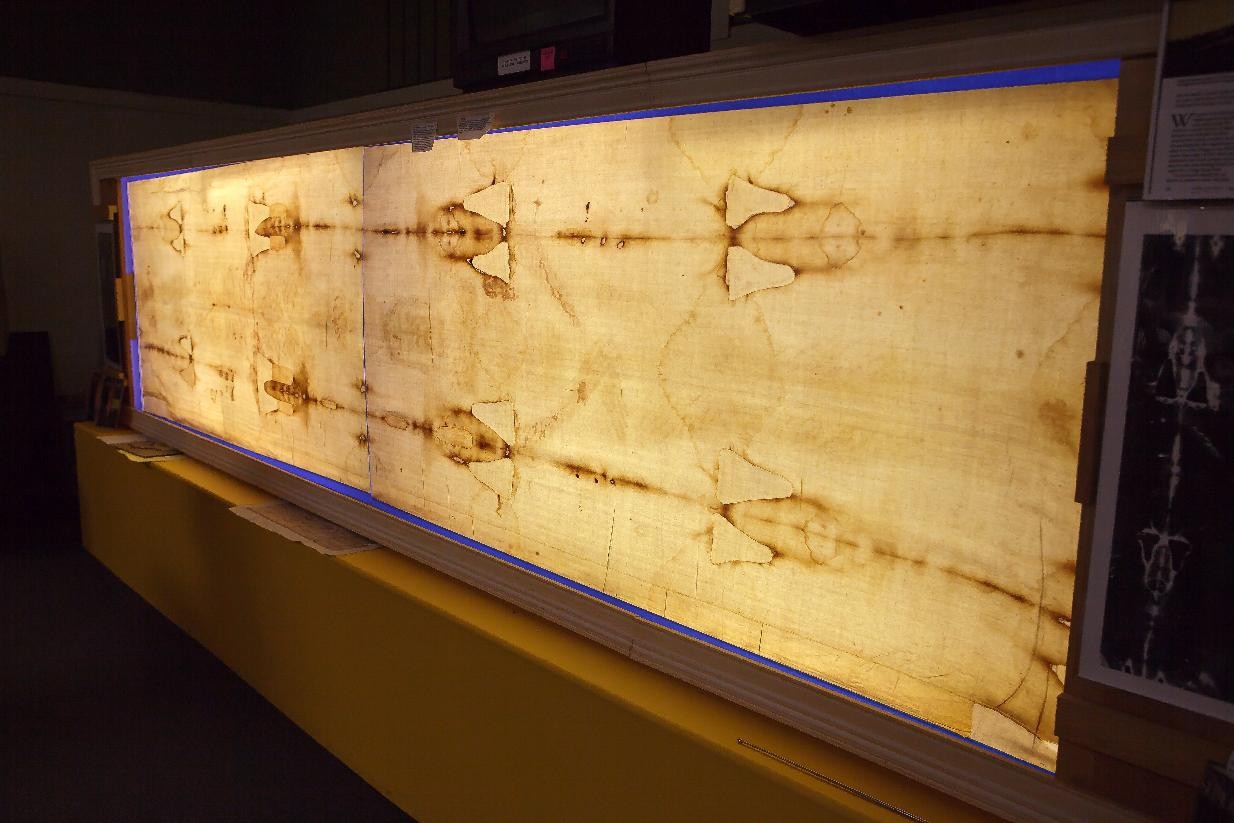
Full-size color image Barrie Schwortz
A VP-8 Image Analyzer system was used in one element of the study. Pete Schumacher used multiple digital and analog analysis methods to compare study results. He wanted to insure, that it would be possible for others to duplicate the work, assuming they are experienced in the practices necessary to digitize images properly from photographs and to perform subsequent digital analysis. The digital capture process is critical and essential to the quality of the studies. High accuracy is available nowadays through digital images and processes.
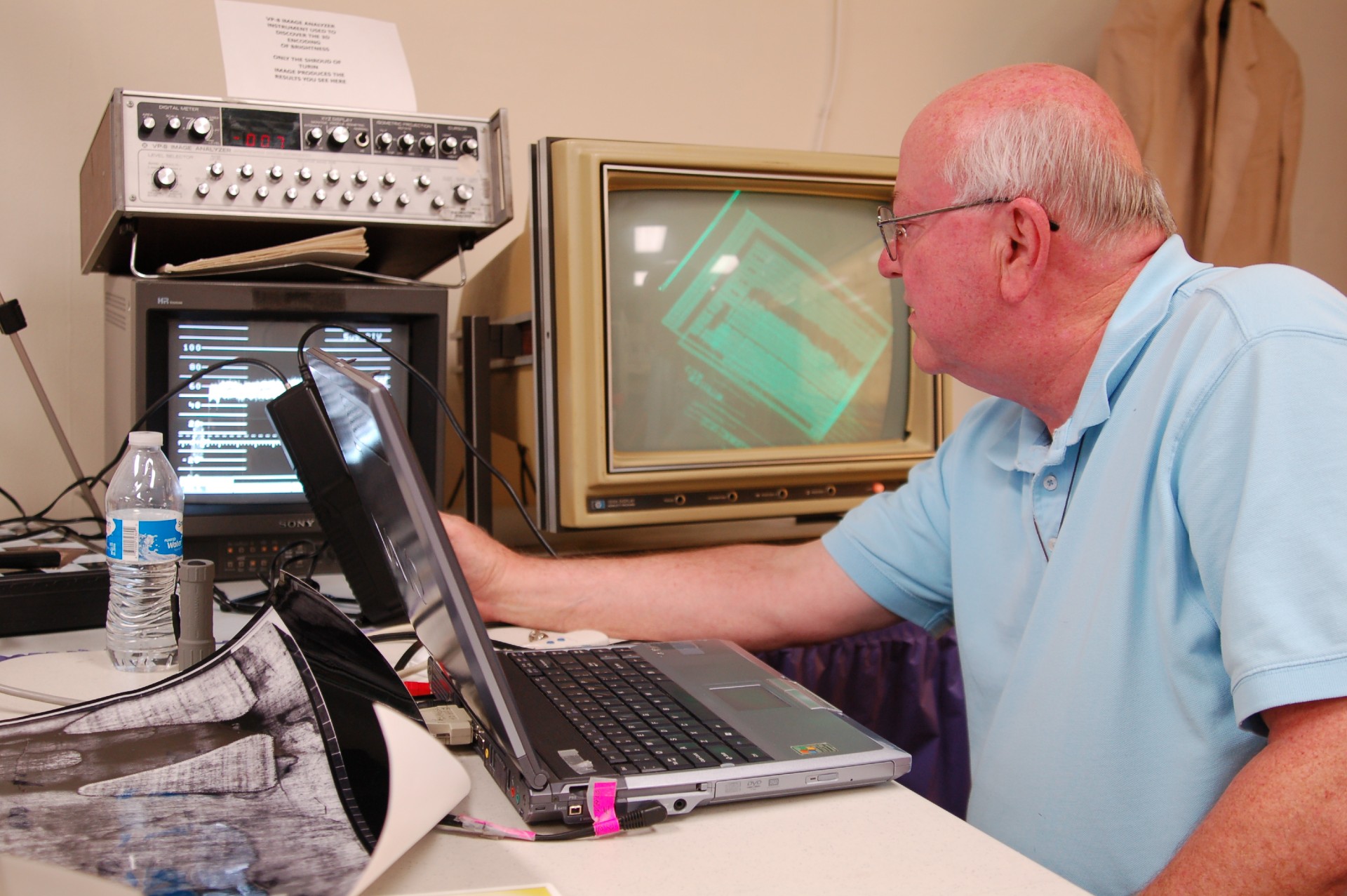
Pete Schumacher with VP8 Image Analyzer
THE THREE NAIL WOUNDS
When we look at photographs of the Shroud, we can see that there are two nail wounds on the front image. One on the left arm crossed over the right arm, localized in the wrist area and the other wound on the front of the left foot crossed over the right foot and on the dorsal image a wound on the sole of the right foot. We may assume that the other wrist, that is not visible because of the overlying left arm, also will have a nail wound.
Roman nails were made by blacksmiths and produced in shapes that could be triangular or quadrangular and many times they were made quadrangular near the top of the nail and near the lower end they would be three-edged, having a sharpened point. There are in museums many examples of these Roman nails.
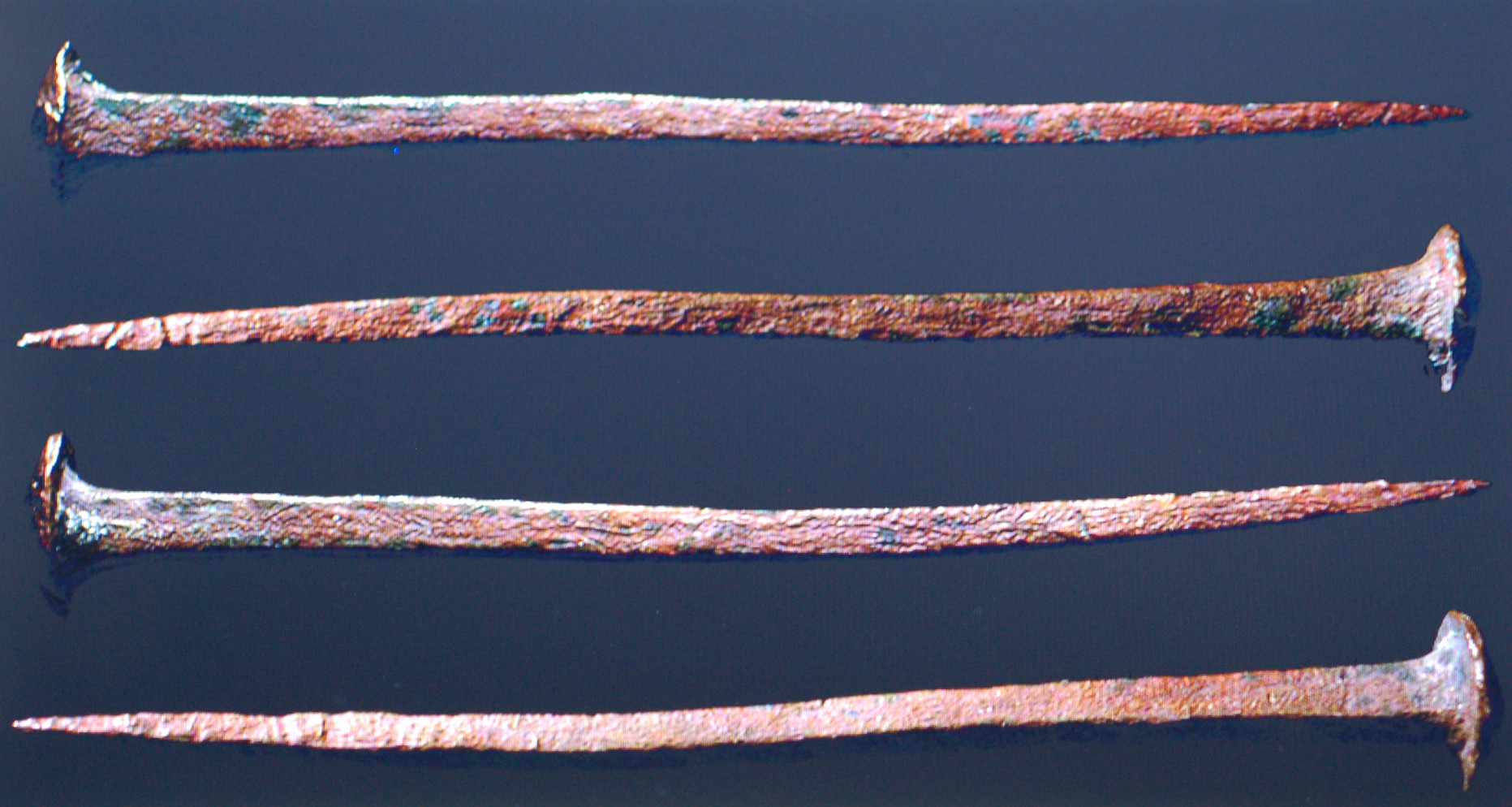
Roman nails |
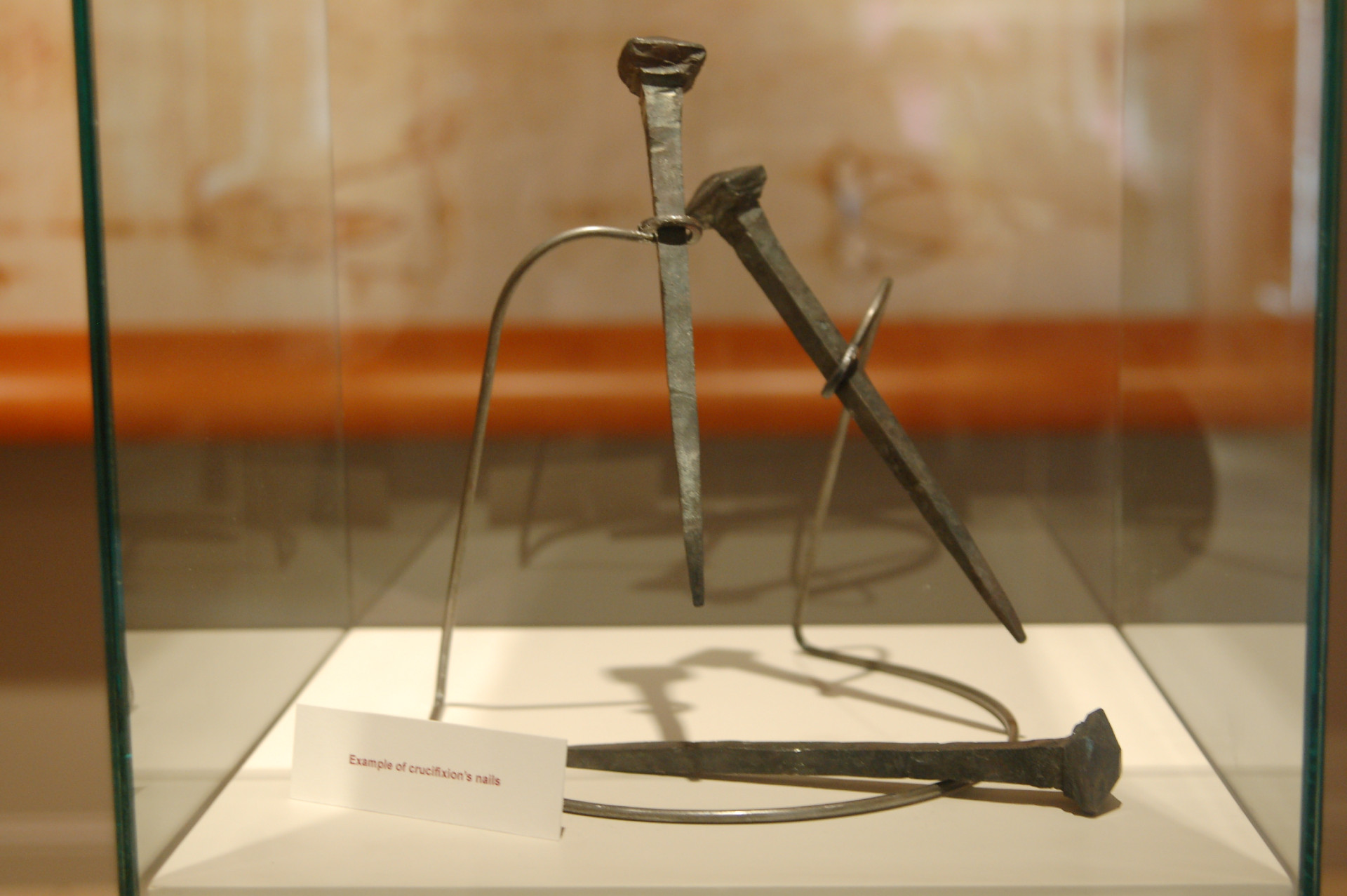
Roman nails in exposition |
THE NAIL WOUND IN THE LEFT WRIST IN THE FRONTAL IMAGE OF THE SHROUD
1) The wound in the dorsal part of the wrist is quadrangular and the edges are very well visible. Measuring the sides gives the values of 12 x 17 mm. The square shape is seemingly caused by the fact that the upper part of the nail was the last part that penetrated, and the three-edged part would be in the wood of the cross. This location is also very interesting because it shows that the nail would penetrate in the part of the wrist were the small bones are situated, like Dr. Barbet already observed in the thirties of last century. This would fix the nail and the hand very well. In Christian art you will almost always see that the nail is driven through the palm of the hands, but that will not give a very good fixation of the nails.
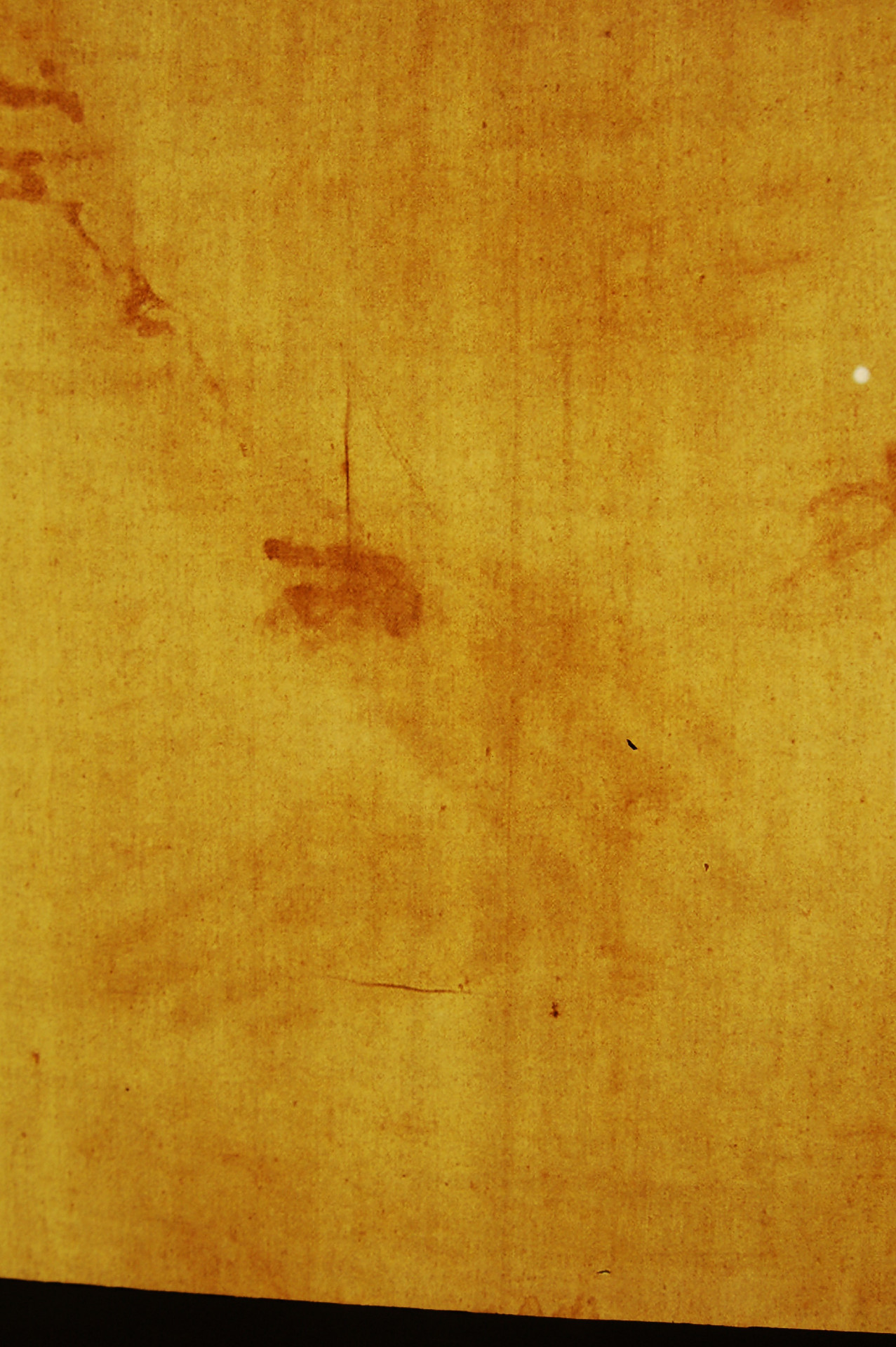
Nail wound left wrist |
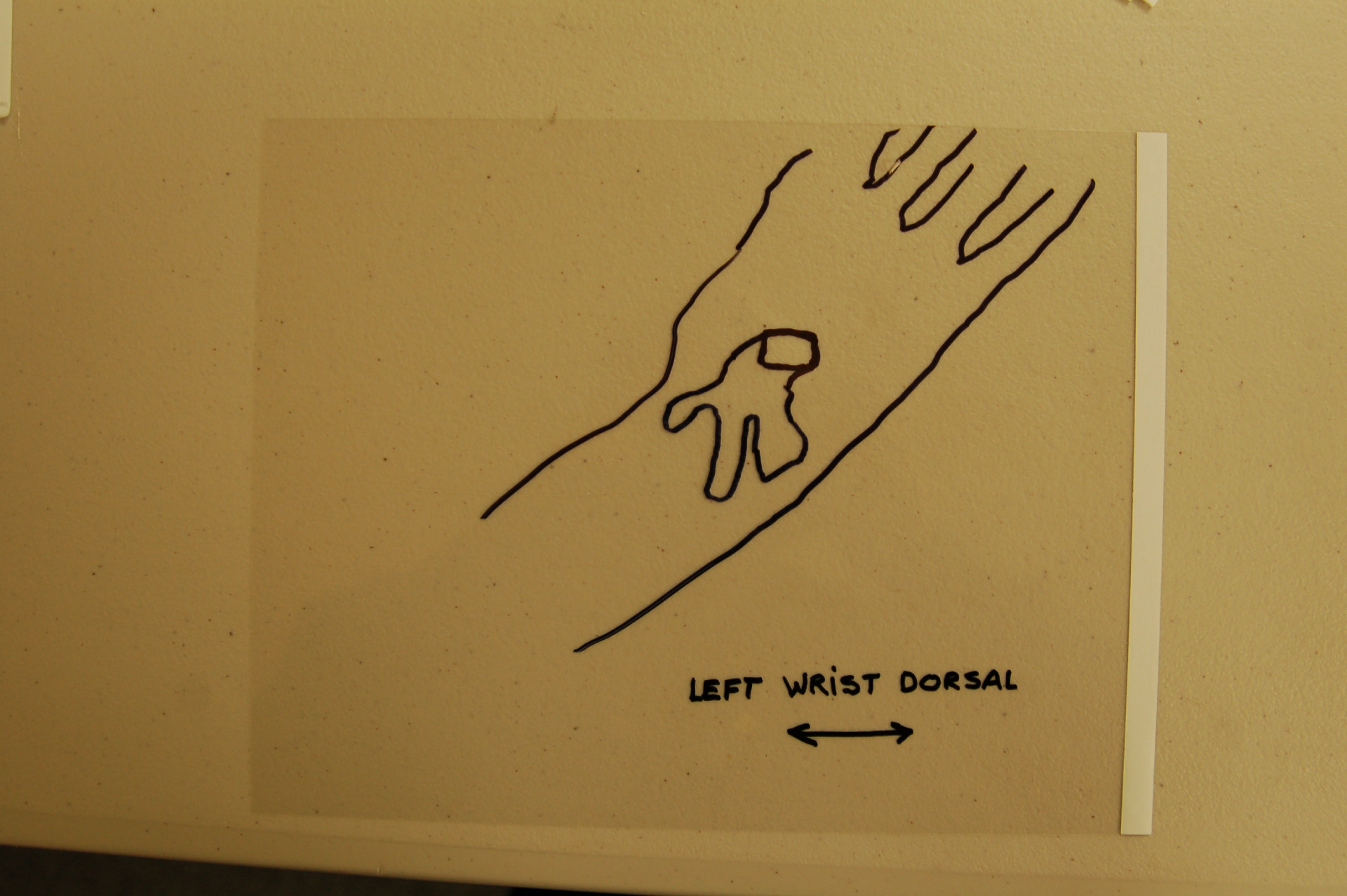
Drawing nail wound |
THE NAIL WOUND IN THE LEFT FOOT IN THE FRONTAL IMAGE OF THE SHROUD
2) When we look at the wound in the frontal image on the left foot, we will also see a quadrangular shape of the nail wound, the same as in the wrist wound and also because the upper part of the nail was the last part to penetrate here. Measuring the size of the rectangular wound we see that the values are 15 x 22 mm. It is interesting to note that this is larger than the 12 x 17 mm rectangle in the wrist area, so the conclusion is basically that different nails were used to fixate the wrists and the feet. To fixate the feet a larger nail was used, also because the left foot was placed on top of the right foot and then one large nail was used to fixate the feet. If you measure two feet on top of each other, you can measure that the distance from the sole of the right foot till the top of the left foot will be around 12 cm. So, you will need a nail of at least 20 cm to fixate the two feet.
In Trier, Germany, is kept a Roman nail that is considered an authentic nail and brought there by the Empress Helena, the mother of the Emperor Constantine, in 326 A.D. It is called the Holy Nail of Trier and has a length of 21 cm.
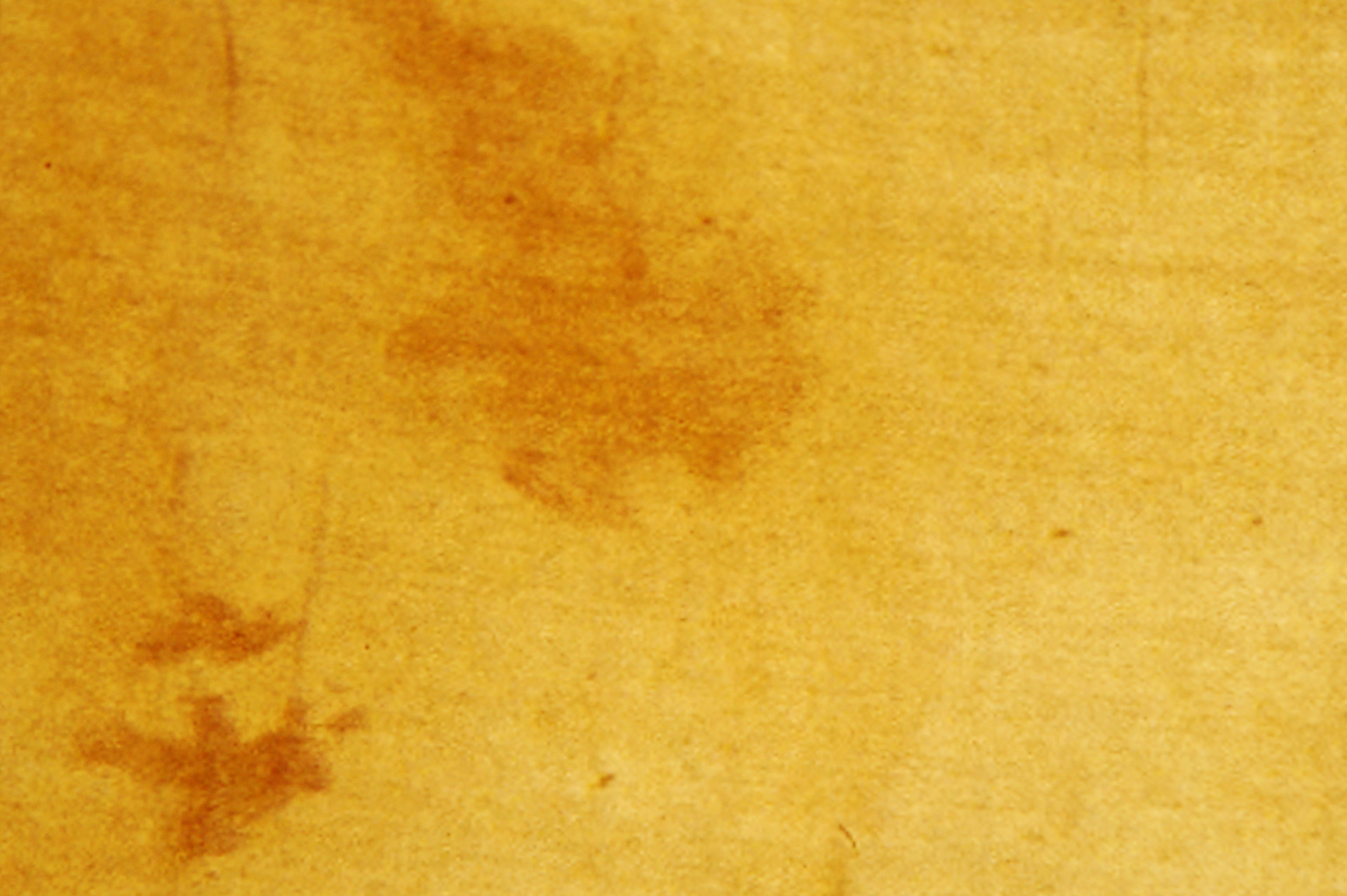
Nail wound left foot |
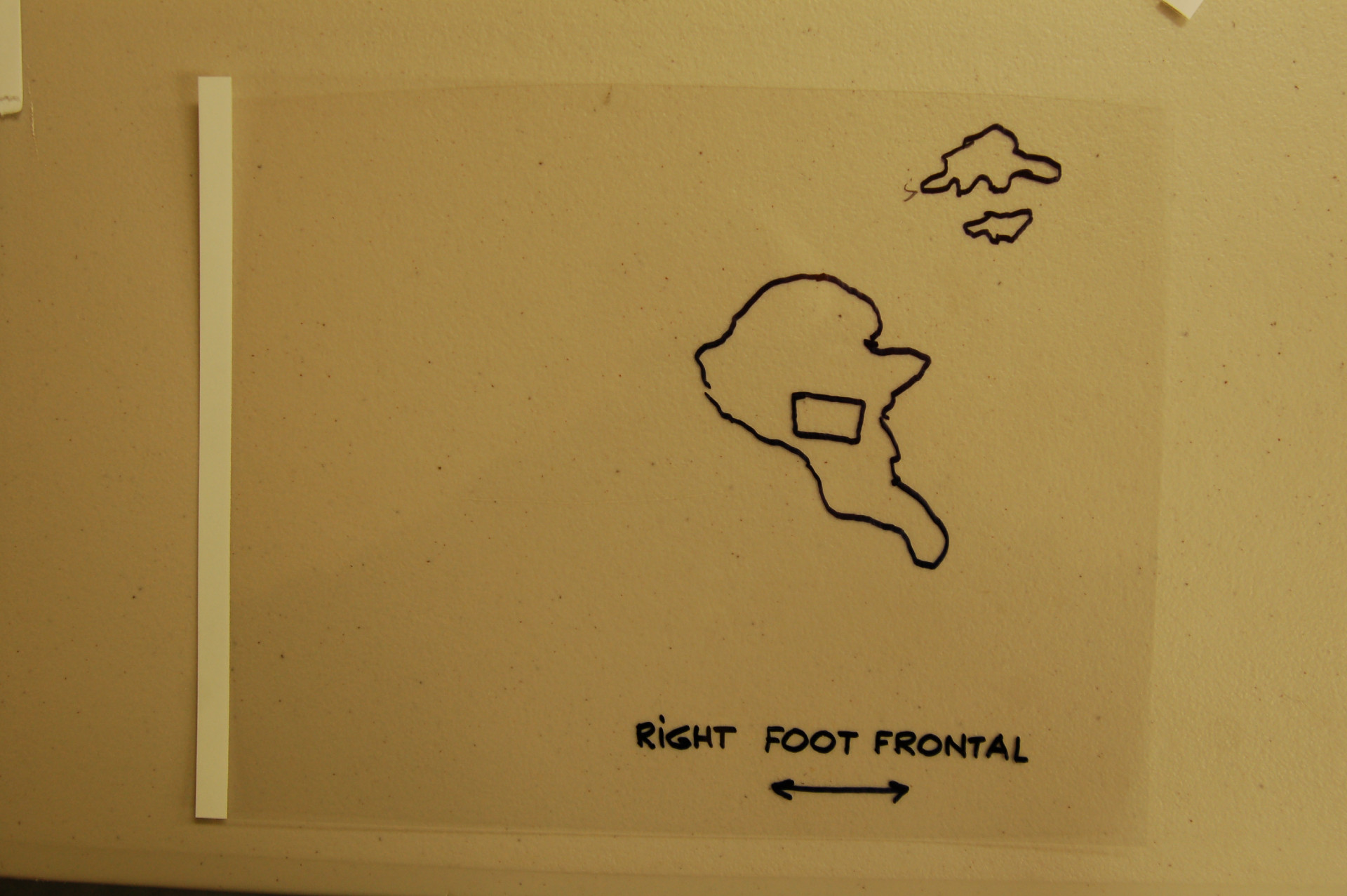
Drawing nail wound |
THE NAIL WOUND IN THE DORSAL IMAGE OF THE SHROUD IN THE SOLE OF THE RIGHT FOOT
3) Now we direct our attention to the wound on the dorsal side of the image and that is in the sole of the right foot. We find here a three-edged wound with angles of about 60 degrees of the edges and measuring we find that these sides are 15 x 20 x 20 mm. Remember that the size of the rectangular part of the nail in the entrance part of the wound was 15 x 22 mm. So, in the exit wound in the sole of the right foot the shape is triangular which makes it easier to penetrate. The distance of the upper side of the left foot till the underside of the right foot is about 12 cm, which leaves about 9 cm to penetrate the wood of the cross and gives a complete fixation of the two feet. Movement was only possible in the knees, but not in the feet.
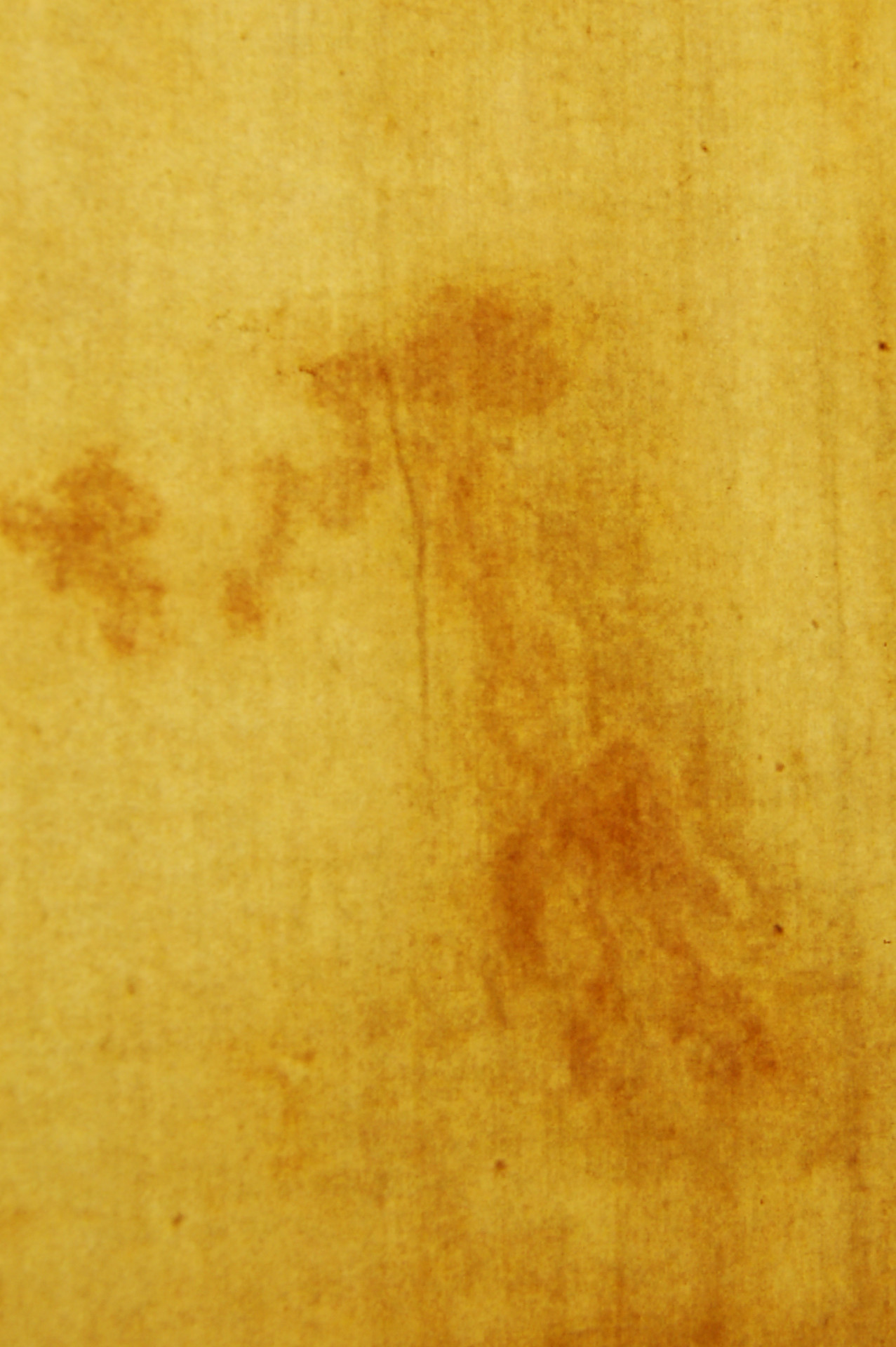
Nail wound right foot |
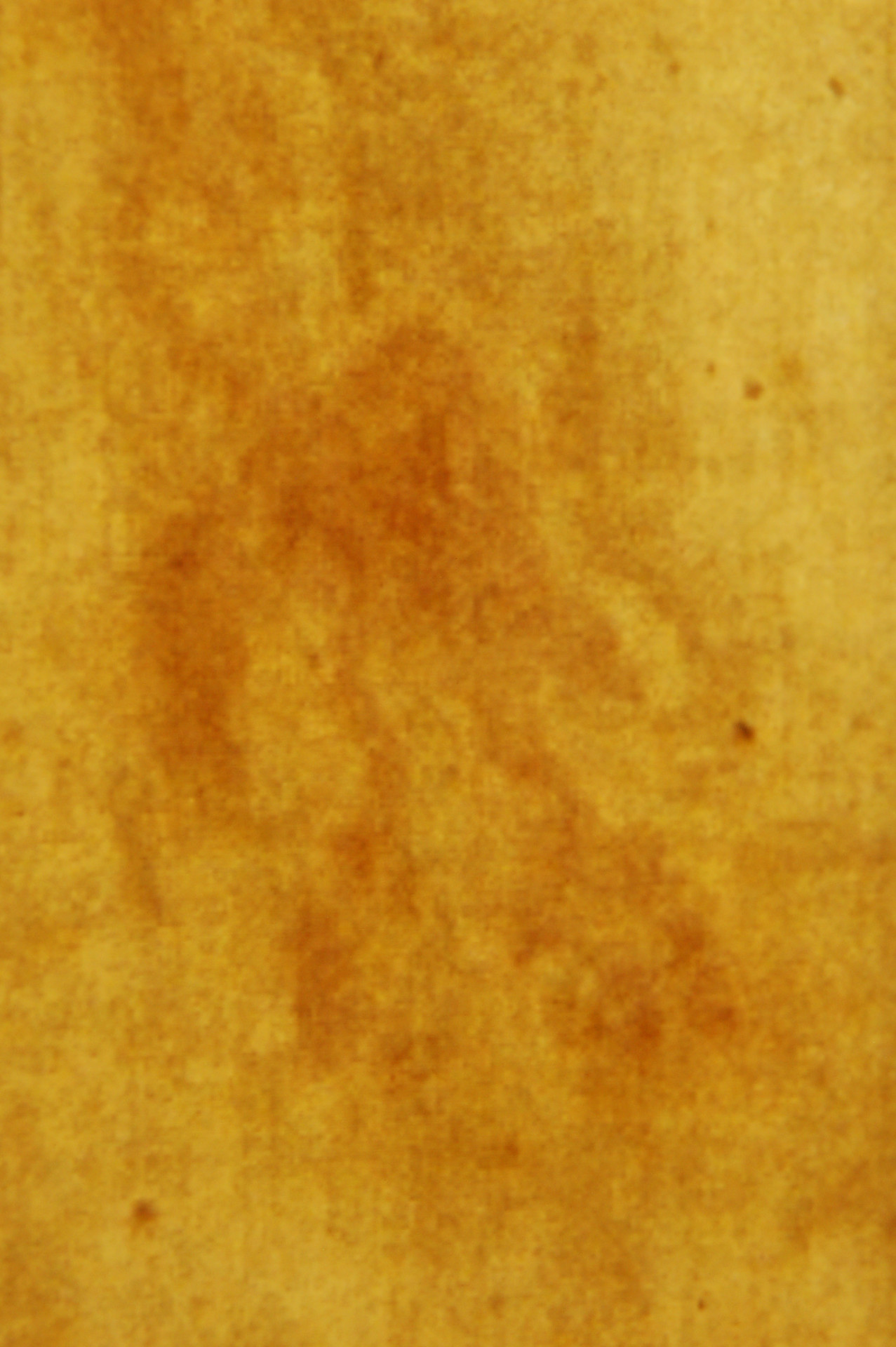
Nail wound right foot |
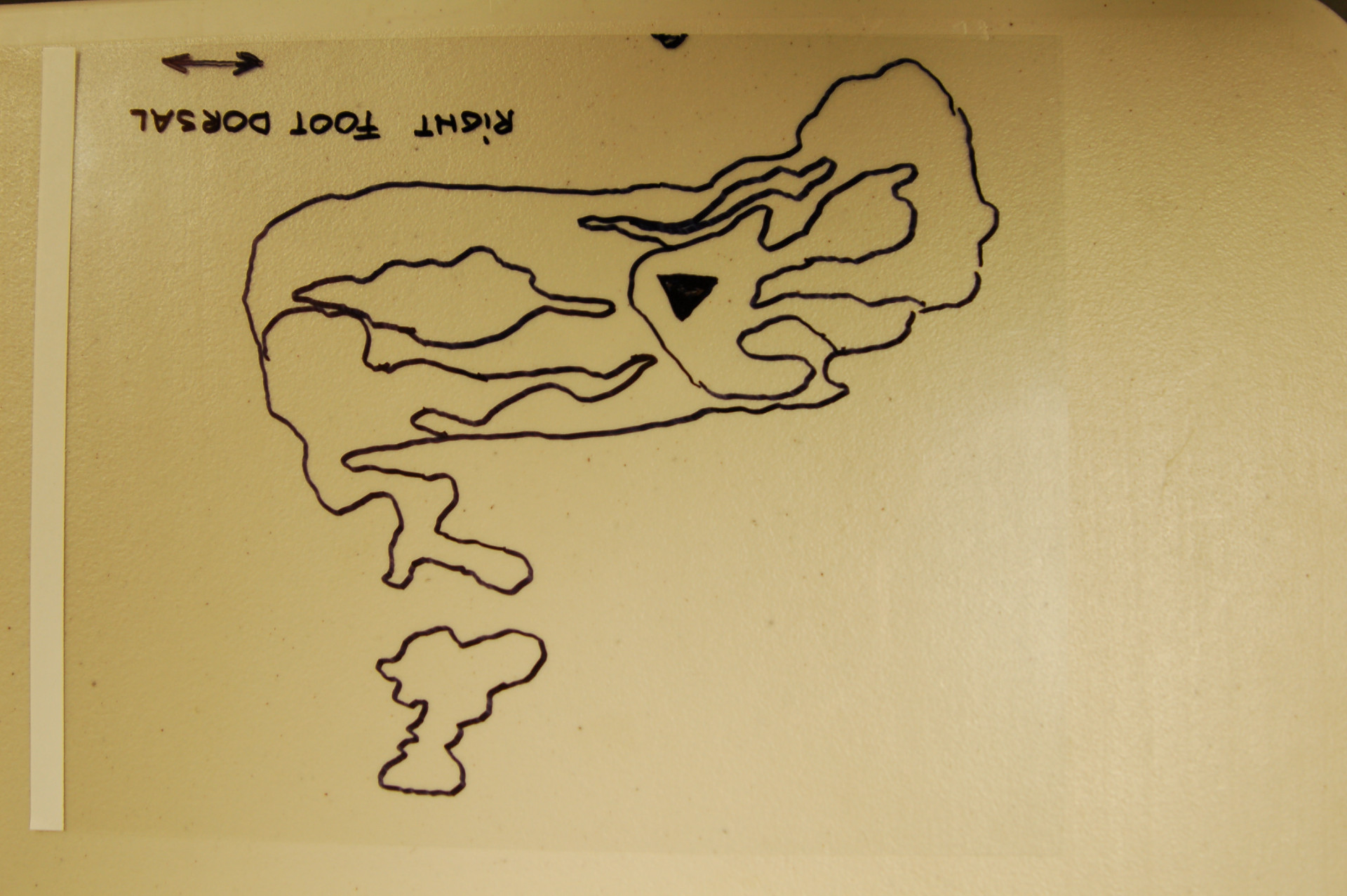
Drawing nail wound |
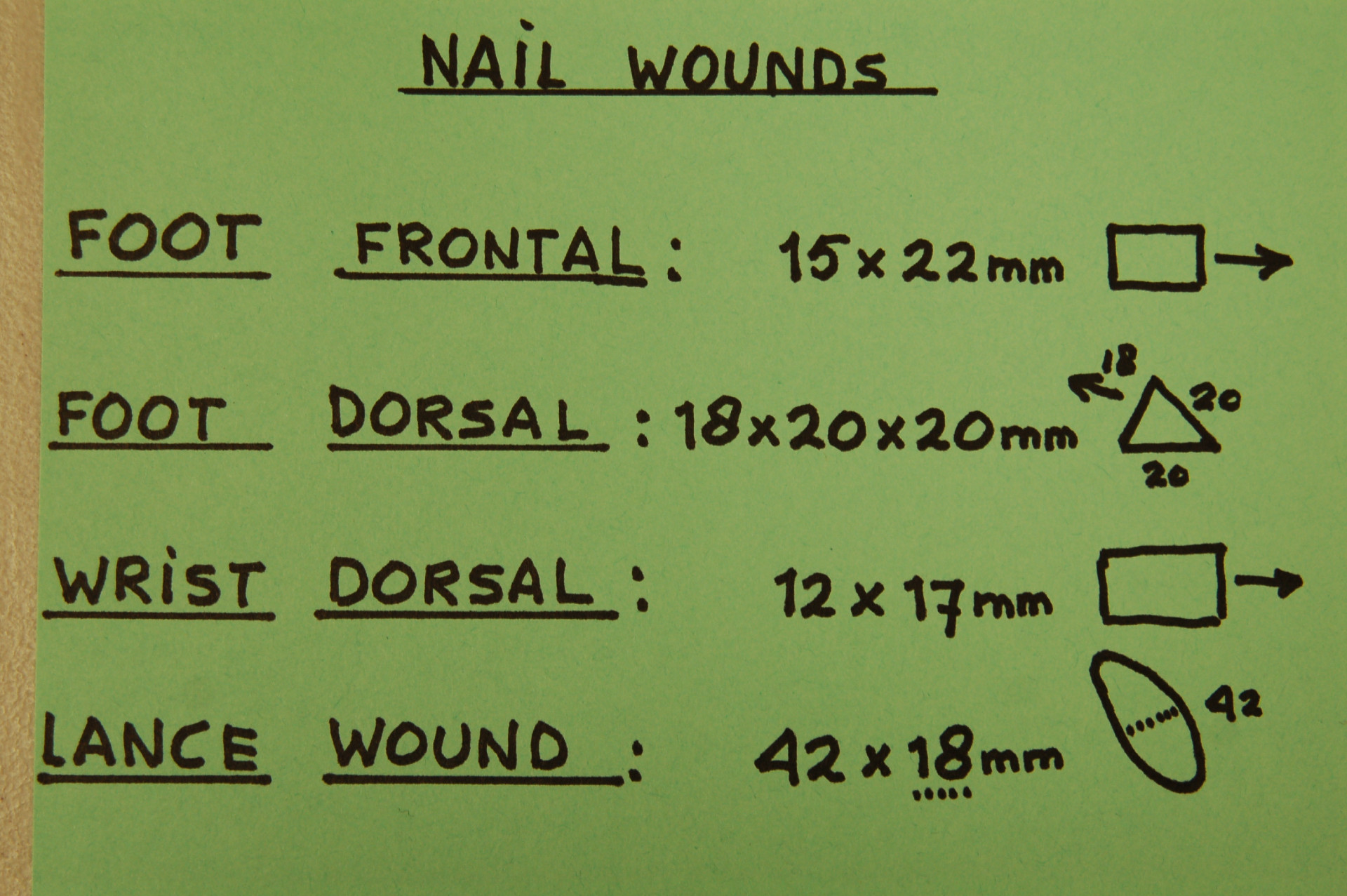
Measurements of the 3 nail wounds |
We made a PowerPoint Presentation, of this part of the research and you can see the different measurements and the size of the three nail wounds.
Start at page 25
Click to see Research Nail Wounds
*To return close tab
Research Phylacteries arm, head
In May of 2012 Dr. Petrus Soons and Pete Schumacher did an investigation to see if Alan Whanger was right when he stated that he found “proof” that on the left arm of the Man on the Shroud there were indications that He had a phylactery bound on the left arm and also a phylactery on the front of the head.
Remembering God’s command to the Hebrews in Deuteronomy 6:8, to “bind them
(God’s words) as a sign on your hand, fix them as an emblem on your forehead”, we (the Whangers) wondered whether the box found between the eyes might be a head phylactery.
The Hebrew word for phylactery is tefillin. Each tefillin contains tiny parchments on which Scripture verses are written. There are head phylacteries and arm phylacteries. A head phylactery is known as SHEL ROSH and has four Scripture compartments. The Whangers tell in their book: “A curious finding on the Shroud which also may be seen on many of the early icons is, what looks rather like a three-sided box (the top side is missing) above the nose, just above eyebrow level. There is a V-shaped image extending from the base of the box down over the bridge of the nose They concluded that that could be the image of a head phylactery.
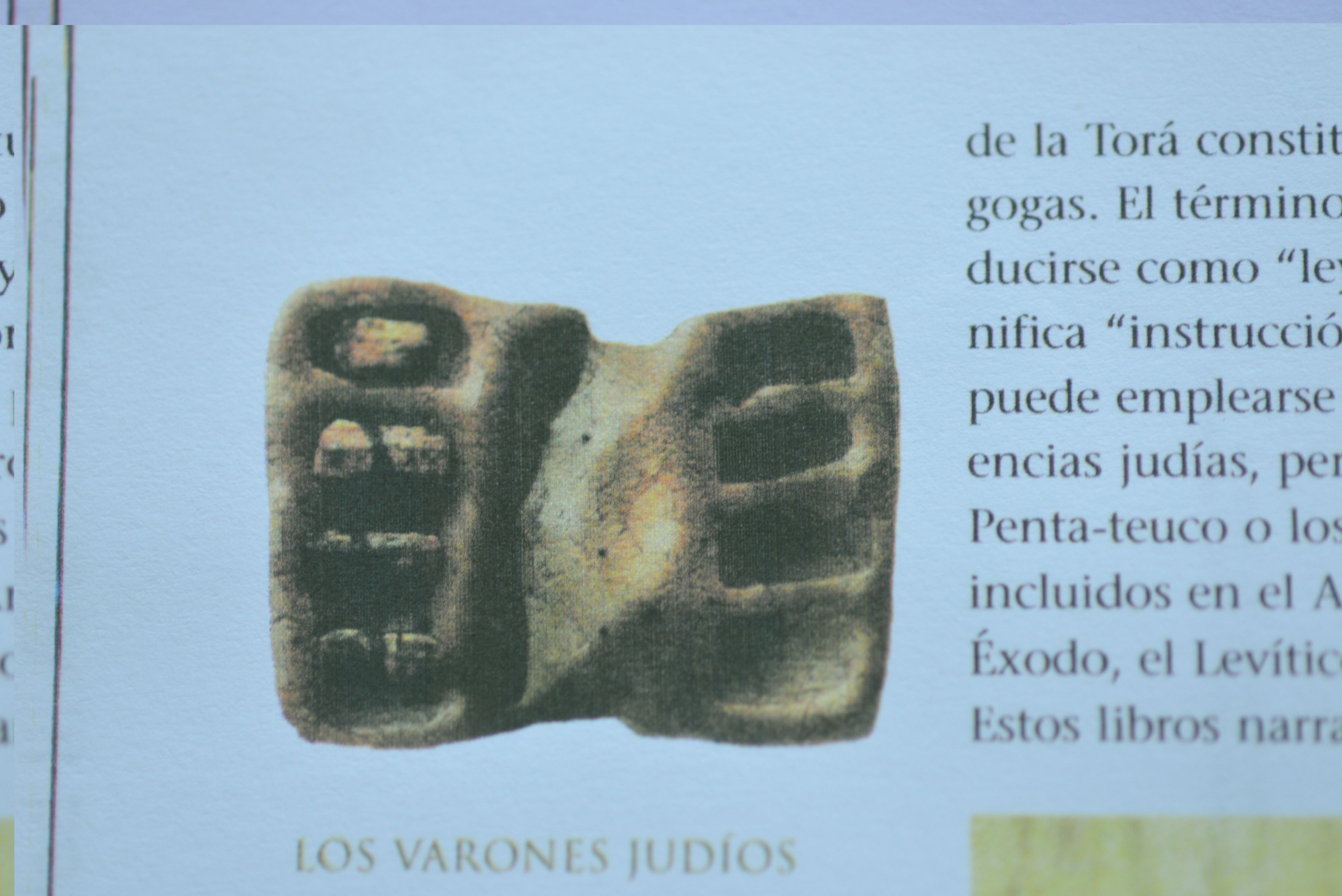
Image 2: Shell Rosh, head phylactery
An arm phylactery is known as SHEL YAD and has one Scripture compartment. Each compartment held a prescribed Scripture, each different from the others, carefully hand lettered on tiny parchment, and then carefully folded and stitched in place. Every phylactery was highly venerated, and extreme care was taken that it be perfectly made and meticulously cared for according to strict religious regulations. Phylacteries were (and are still) worn on the head and on the non-dominant arm by orthodox Jewish males during times of prayer. Their presence clearly identifies the wearer as a Jew since nobody else would ever wear one.
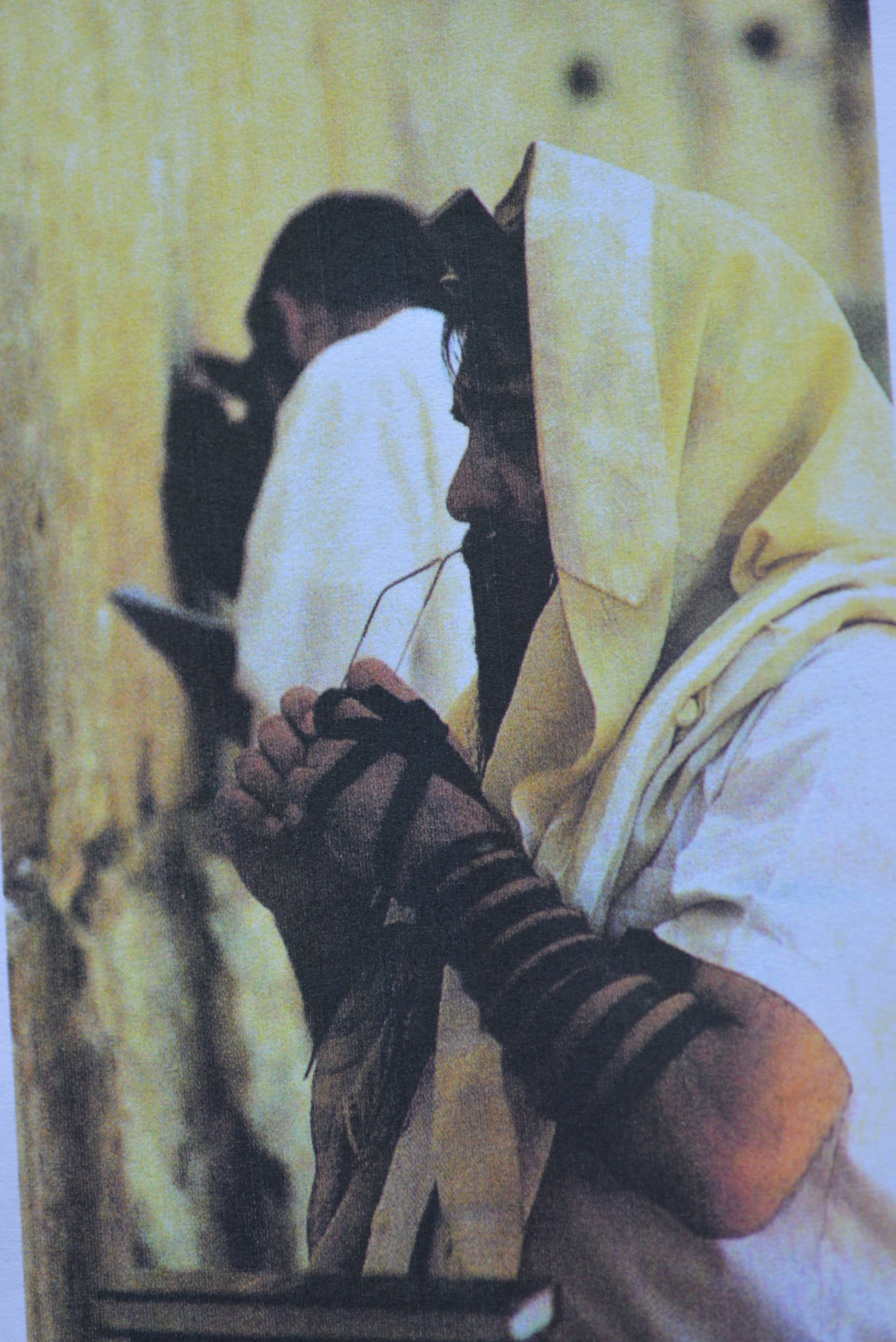
Image 1: Shell Yad, arm phylactery
It certainly was not customary to bury a body with a phylactery on it. Indeed, any contact of a phylactery with a corpse was unthinkable, for this would have made it ritually unclean. Of course, if a man was wearing a phylactery at the time of death, it would have been buried with the body, because according to Jewish custom, anything that was in contact with the body at the time of death, was buried with the body. Scripture makes no mention of a phylactery at the time of Jesus’ death and burial.
Concerning the arm phylactery, the blood flow on the two arms is different. On the left arm it is repeatedly interrupted diagonally, which might have been caused by the strap of an arm phylactery. An arm phylactery is held in place at elbow level by a loop of leather strap, and the strap then is wound around the arm seven times and secured by entwining around the hand and fingers with a ritual knot.
Since it was not customary to bury phylacteries with the dead, and since in this case the phylacteries were likely a most offensive means of mocking (by the Roman soldiers ??), why were they not removed before burial ? There are at east two reasons: it was customary to bury with the body anything that was in touch with the body at the time of death, and it was also customary to bury with the body anything that had the lifeblood on it.
So, this was the information that Pete Schumacher and Petrus Soons had to go on as described by The Whangers.
They checked the left arm with the VP-8 Image Analyzer (Level Slicing) and used different methods to check the left arm and could indeed find the 3D relief of the binding of what could have been the straps around this arm (See different photographs). The different blood flows are clearly visible with their interruptions. So, it is quite possible that Alan Whanger was right in his statements about the phylactery on the left arm. You can even count the seven “valleys” were the strip would have been present on the arm.
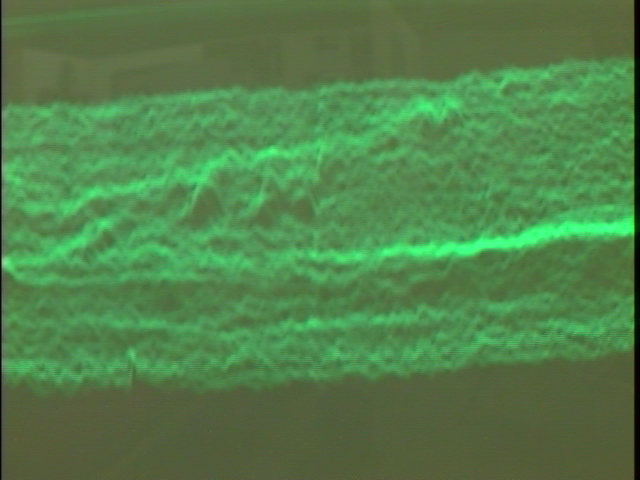
Image 3: VP8 Image Analyzer 3D relief interruption blood flow left arm
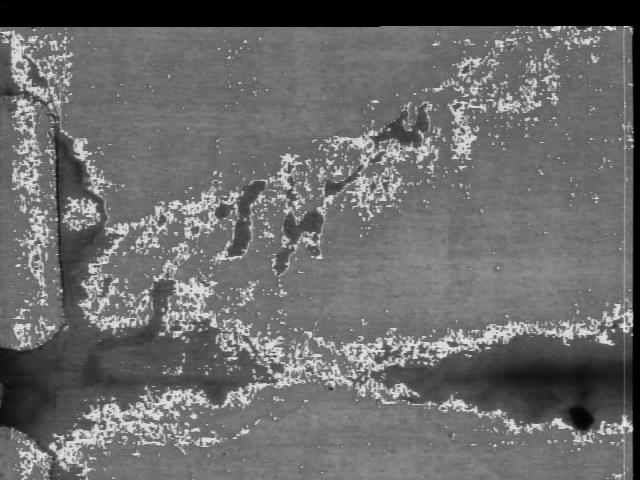
Image 4 |
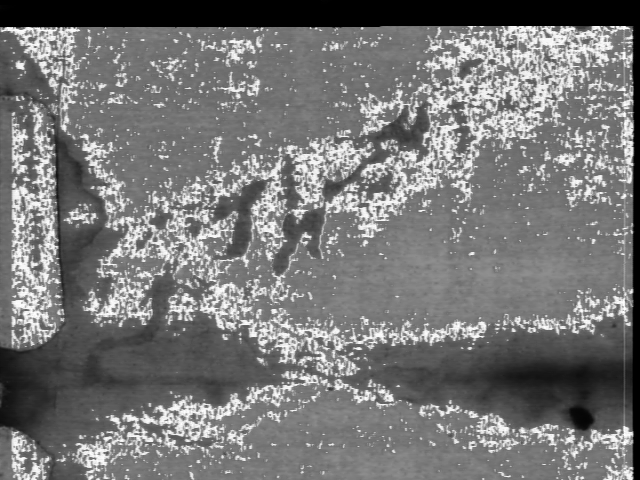
Image 5 |
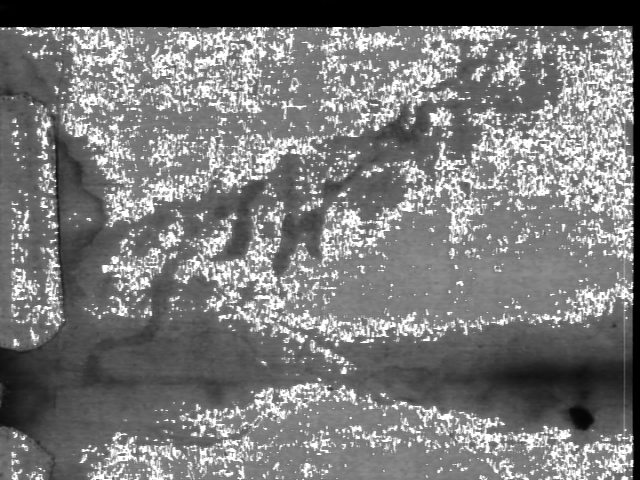
Image 6 |
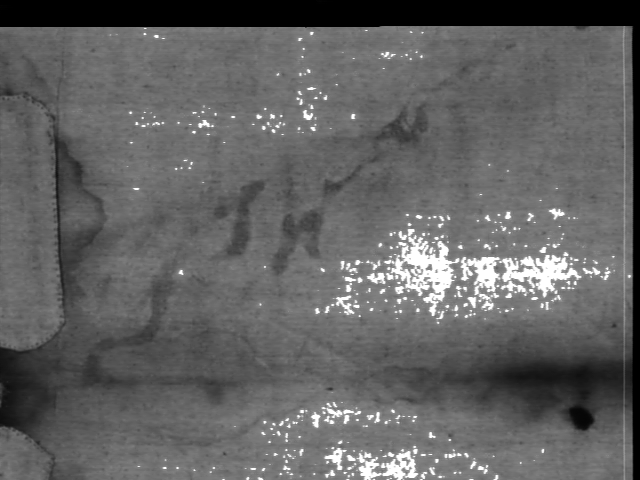
Image 7 |
Level Slicing VP8, showing interruption in blood flow
There are also photographs of the Vignon Markings, showing the box between the eyebrows and an icon that shows this detail.
The photograph made during the research with the VP8 Image Analyzer shows a little vertical, square, relief on this indicated area.
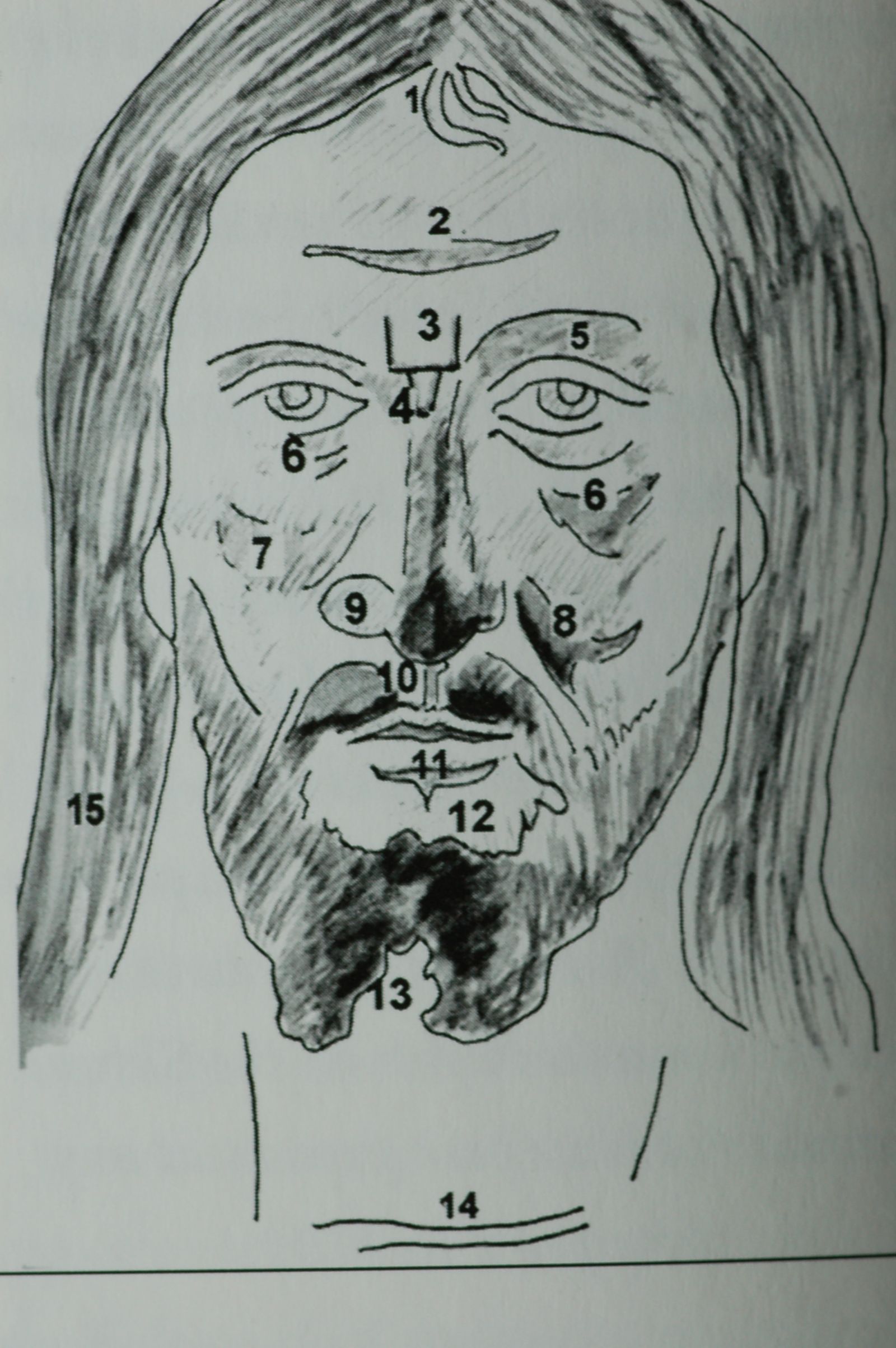
Photo 11: Vignon Markings N° 3 and 4 |
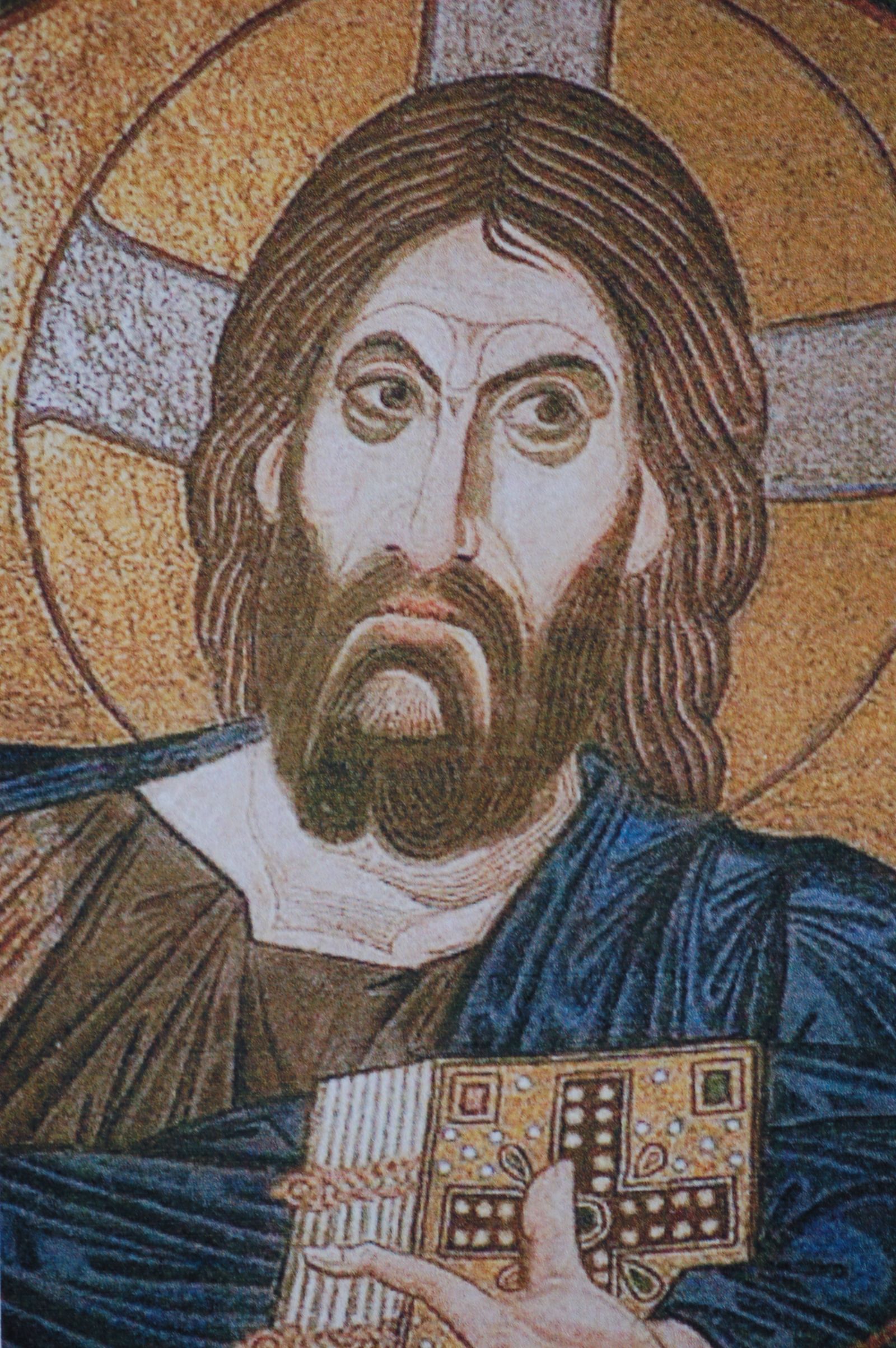
Photo 12: Icon Jesus with Markings 3 and 4 |
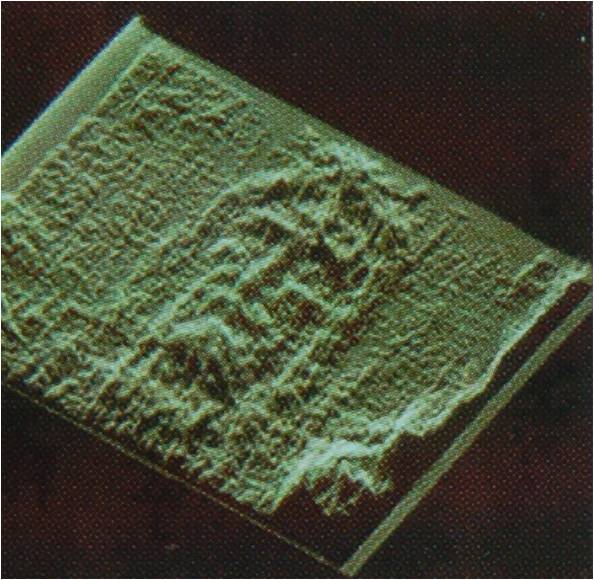
Photo 13: Image Head VP8 Image Analyzer square vertical relief above/between eyebrows
So, there are indications in the 3D investigations that there could possibly be these objects on the left arm and between the eyebrows, but, further research with more sophisticated 3D investigations in the future surely has to be done !!!!!
Research Lance
Pete Schumacher and Dr. Petrus Soons in May 2012 did also measurements of the SPEAR wound on the right side of the thorax of the Man on the Shroud.
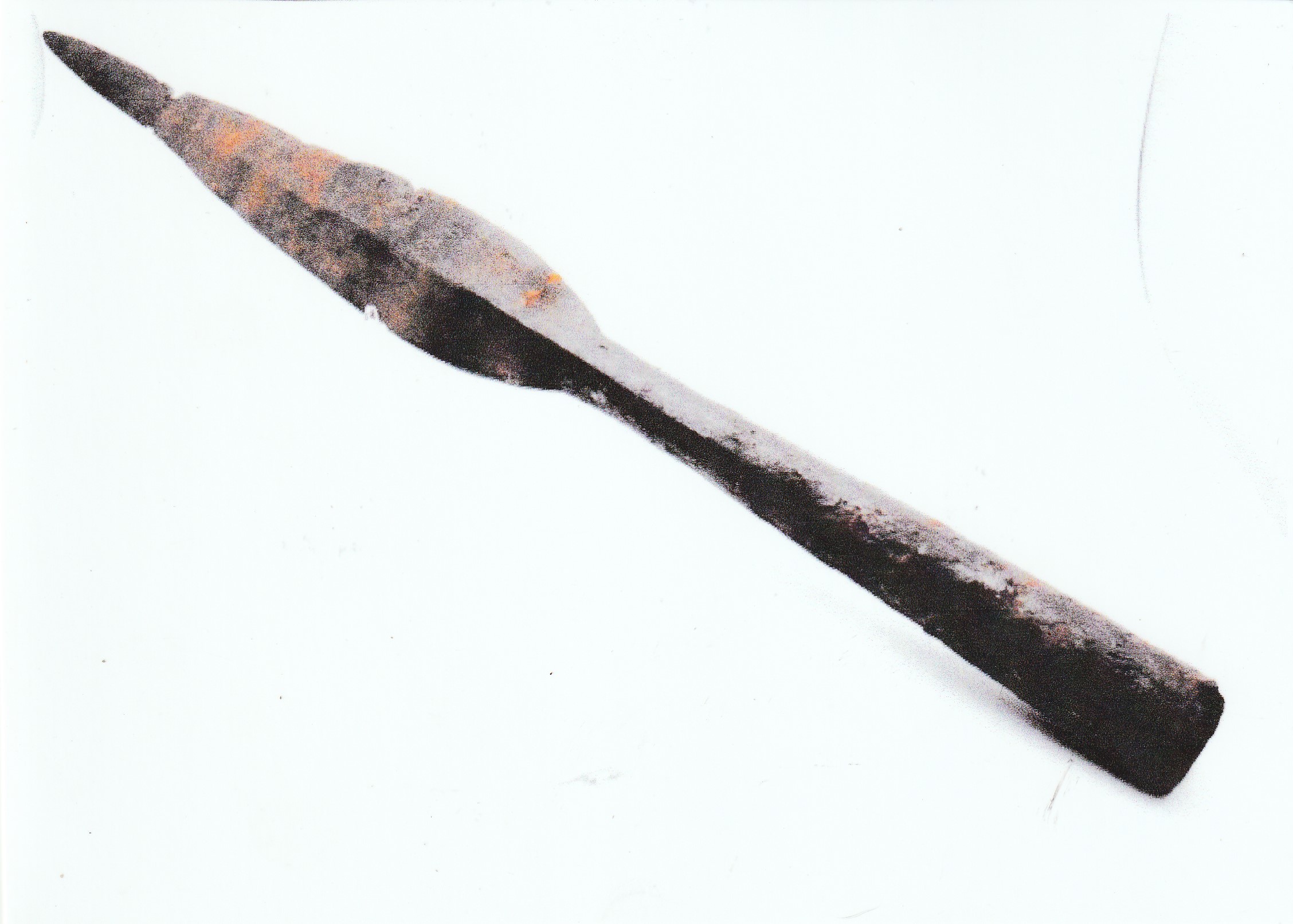
Photo 1: HASTA
The type of spear used is a HASTA or Roman thrusting spear. Some have suggested that the type of spear that would have been used was a pilum, or Roman battle lance, which has a long thin blade, but this is not congruent with the Shroud image. Also, the hasta is the type of spear that is depicted with Christ on ampullae, frescoes and other art-work. The hasta is also depicted on contemporary denarius coins of Tiberius Caesar. The width of the spear head does fit the wound in the chest. The length of the spear head, in examples that we find in museums, is about 23 cm, which would have been long enough to penetrate the lungs and also penetrate the right auricle of the heart. In the Gospel accounts of the death of Jesus, it is recorded that his (right) side was pierced and blood and water flowed out. On the Shroud, coming from the spear wound, there is a flow of blood and a light or clear substance which has been determined to be serum albumin. The spear would have first pierced the lung cavity, from which came the serum (the water of the Scripture), as is consistent with conditions of trauma. The flow of blood was released when the spear entered the right atrium of the heart. This atrium is after death the only part of the heart that is filled with blood. The blood and serum that flowed from the lungs and the heart are typical of post-mortem bleeding.
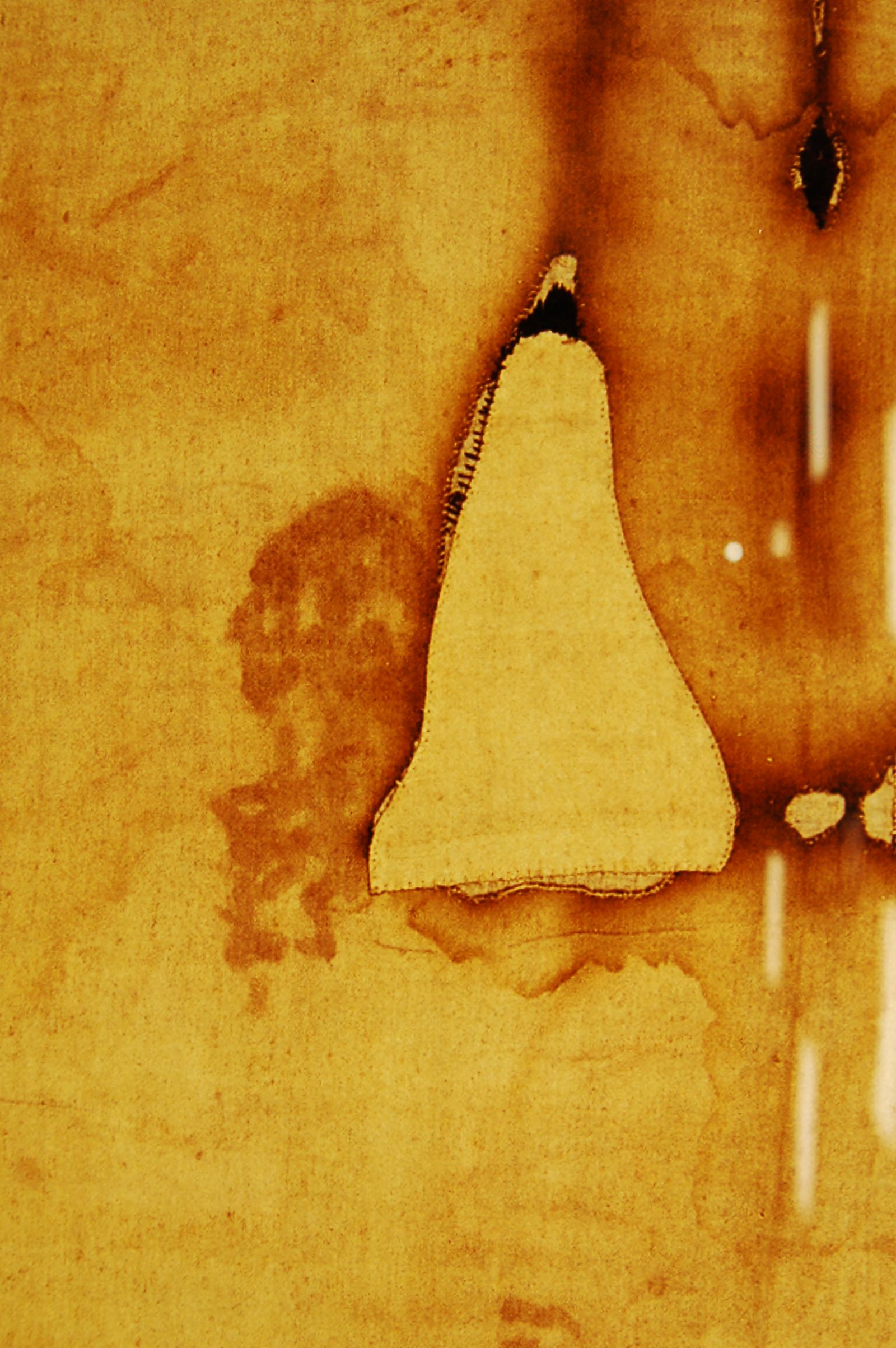
Photo 4. Spear wound with blood/serum overflow
If the individual had not been dead, his legs would have been broken to hasten death. Scripture records that this was done to the other two men that were crucified with Jesus, but not to Jesus because he was already dead. In many places, bodies of crucifixion victims were left on the cross until their bones were picked clean by scavengers. This was not done in Israel, as it was very offensive to the Jews to leave a body on the cross overnight. If victims were still alive late in the day, it was customary to break their legs, so that hey would die quickly and their bodies could be buried or otherwise disposed of before sundown. In the type of crucifixion shown on the Shroud, the individual could breathe in, but he could not breathe out. In order to breathe out, he would have to lift himself up by pressing against the nails in his feet and stretching the knees, an agonizing process. When the individual became too weak to endure this excruciating struggle, or if his legs were broken so that he could no longer lift himself up, he would die of asphyxiation in about ten or fifteen minutes.
Also, the execution squad, consisting of one officer and four soldiers, whose job it was to crucify victims, were themselves crucified if their victims escaped. They were, therefore, extremely careful to make quite certain that their victims were without question completely dead, which is another proof that Jesus indeed died on the cross, apart from the signals of rigor mortis that we can see in the Shroud image.
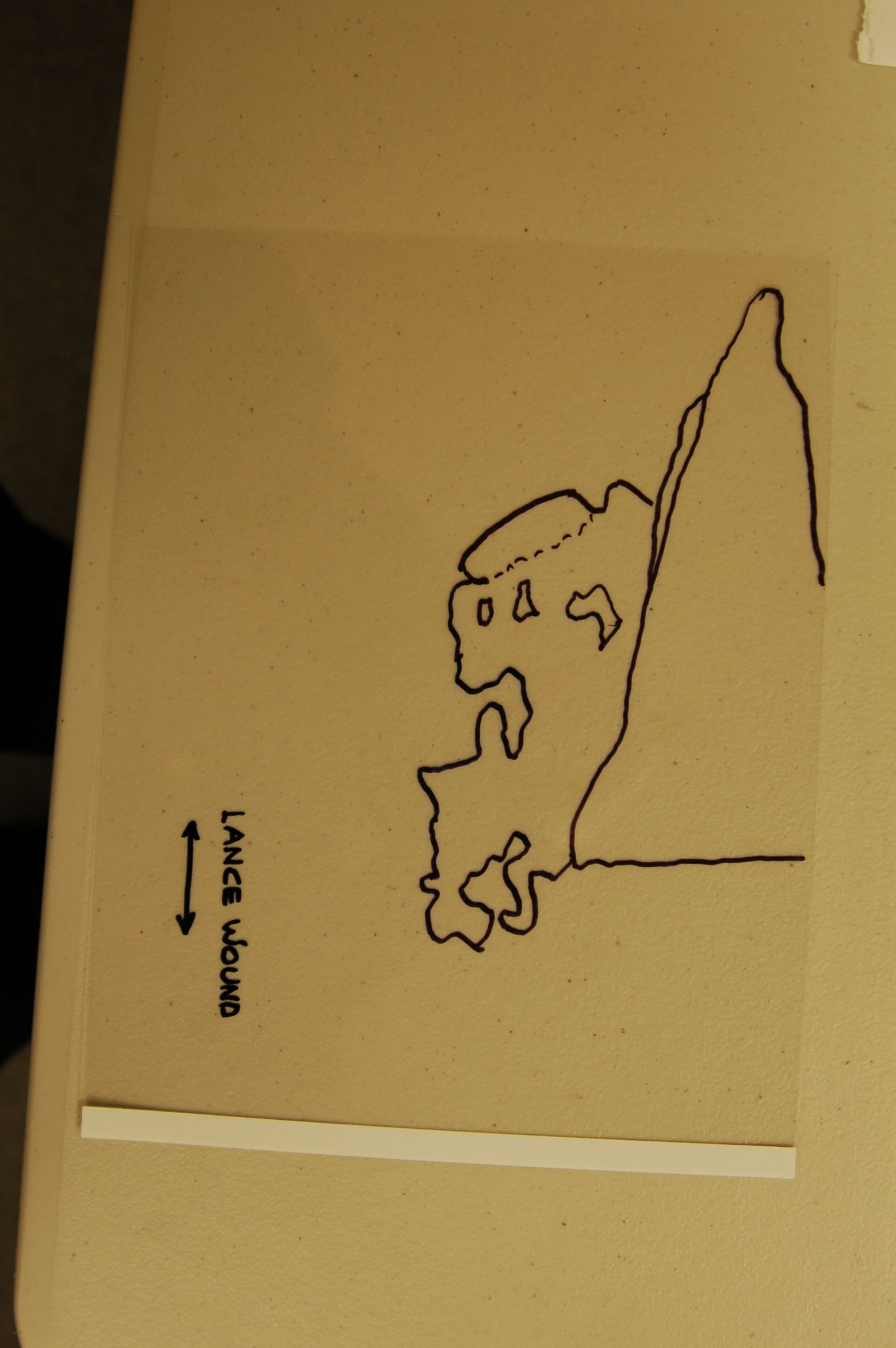
Photo 6: Drawing of spear wound
Measuring the spear wound on the 1:1 Kodak color image we found that this wound measured 42 mm long and 18 mm wide, which is congruent with the HASTA spear.
We checked also the wound in the VP-8 Image Analyzer (see photograph 7) for control and came to the same result.
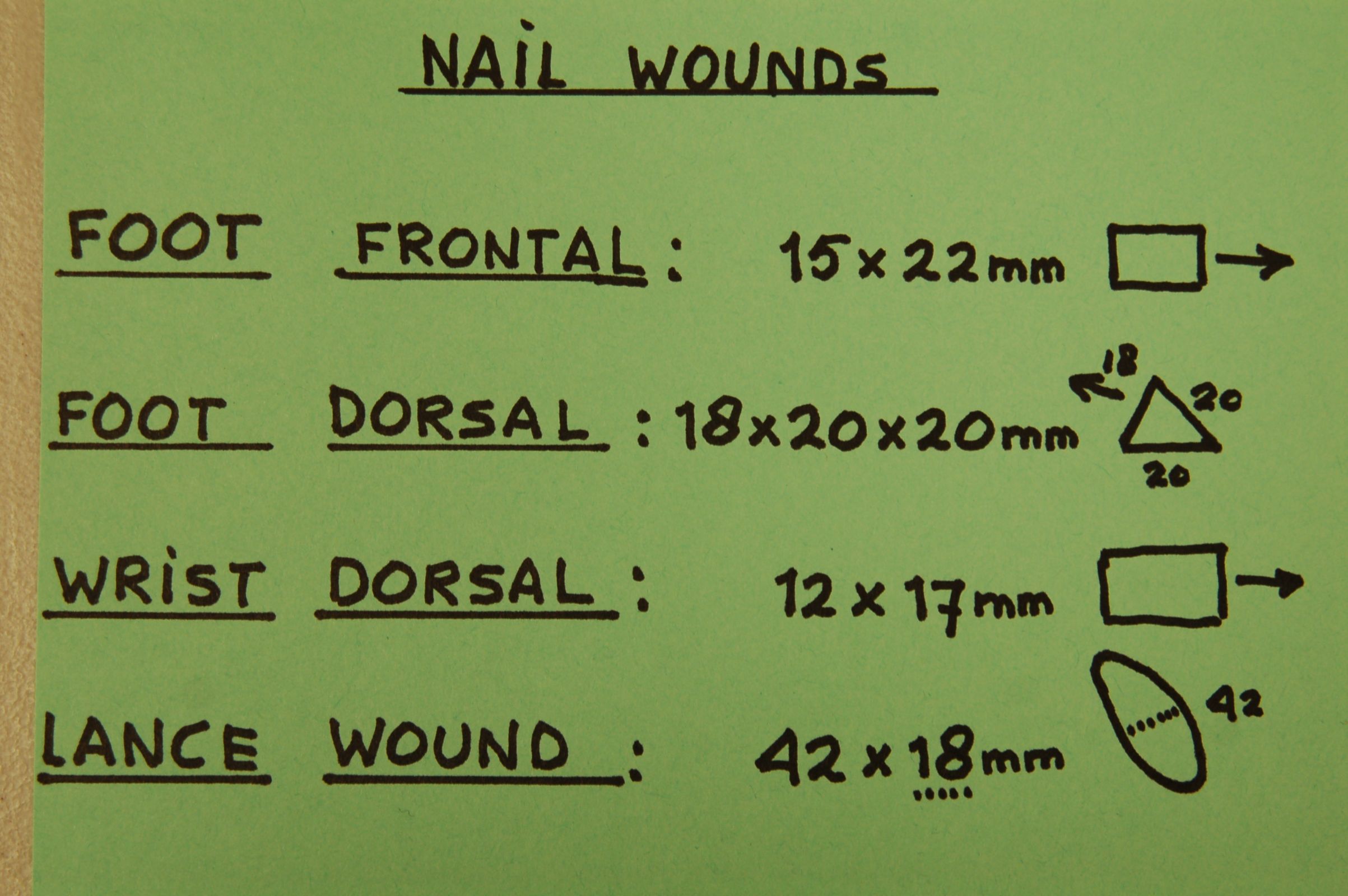
´Photo 7. Measurement of spear wound
As an ADDENDUM it is interesting to explain how Alan and Mary Whanger came to their conclusions. Alan had developed the POLARIZED IMAGE OVERLAY TECHNIQUE and that was a means of comparing two different images by projecting those images, one on top of the other, onto a lenticular screen (one with tiny vertical grooves) through polarizing filters placed at right angles one to the other in front of the projector lenses; and then looking through a third polarizing filter, which, when rotated, fades the images in and out, thus enabling minute and detailed comparisons.
In the chapter ADDENDUM we will show a DVD that explains this method of comparing two different images, a DVD made by the Whangers themselves.
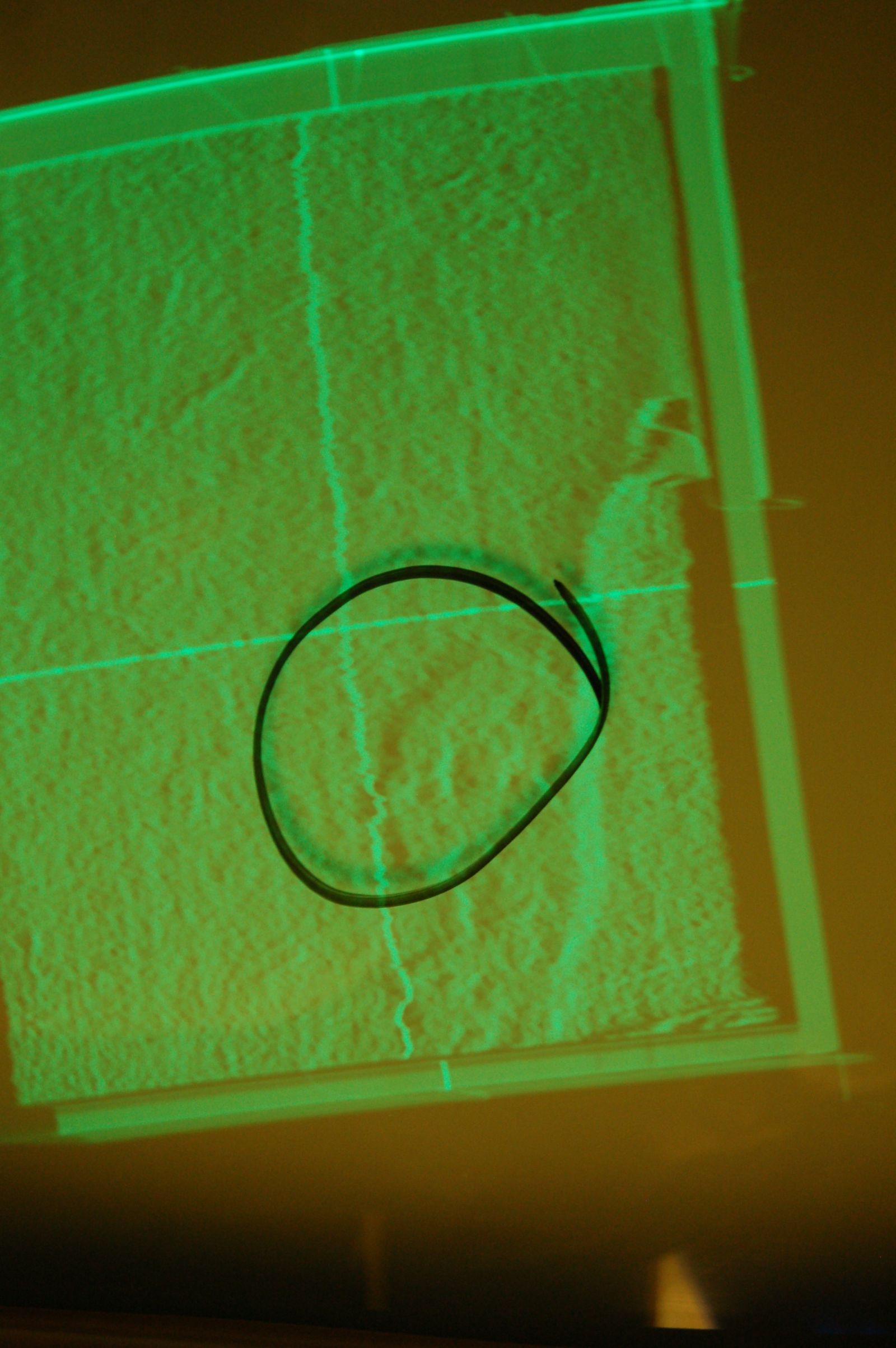
Photo 5. VP8 Image Analyzer spear wound in 3D |
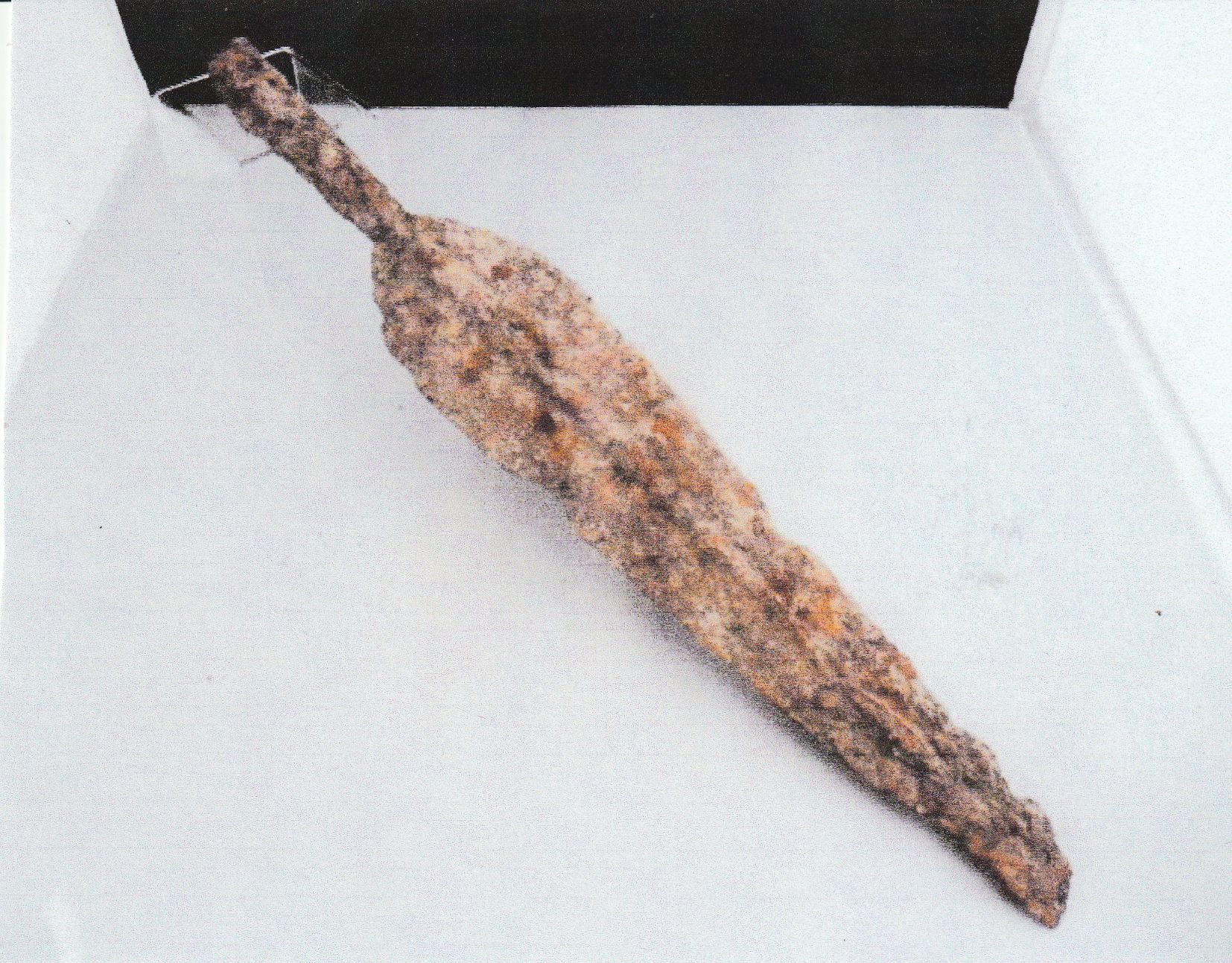
Photo 2. Hasta in Museum |
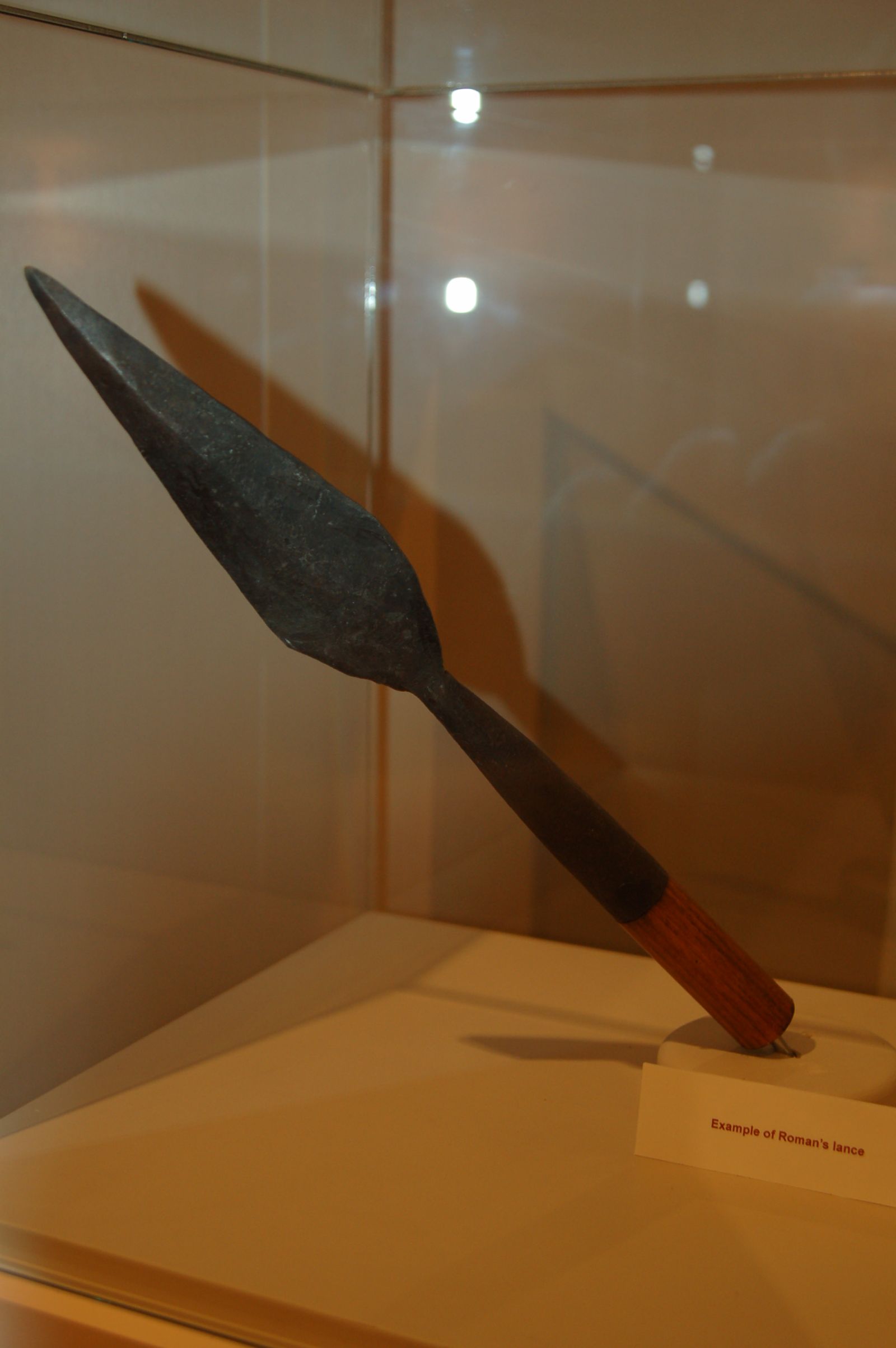
Photo 3. Copy Hasta in exposition Shriud (Panama)
Researh Leptons
The possibility of the presence of coins over the eyes was first raised, when three scientists, John P. Jackson, Eric J. Jumper and R.W. (Bill) Mottern, the instigators of the 1978 Shroud of Turin Research Project, put a photograph of the Shroud face in a VP-8 Image Analyzer, and saw, to their astonishment, an accurate three-dimensional representation rather than the irregular and distorted image resulting from all ordinary photographs and paintings. Two button-like objects, one over each eye, were visible; it was suggested they might be coins which had been used to keep the eyes of the dead closed, a practice common to many peoples for many centuries. British historian Ian Wilson mentioned several coins from the time of Pontius Pilate which would correspond to the size of the “buttons”, about fifteen millimeters or five-eighths of an inch in diameter.
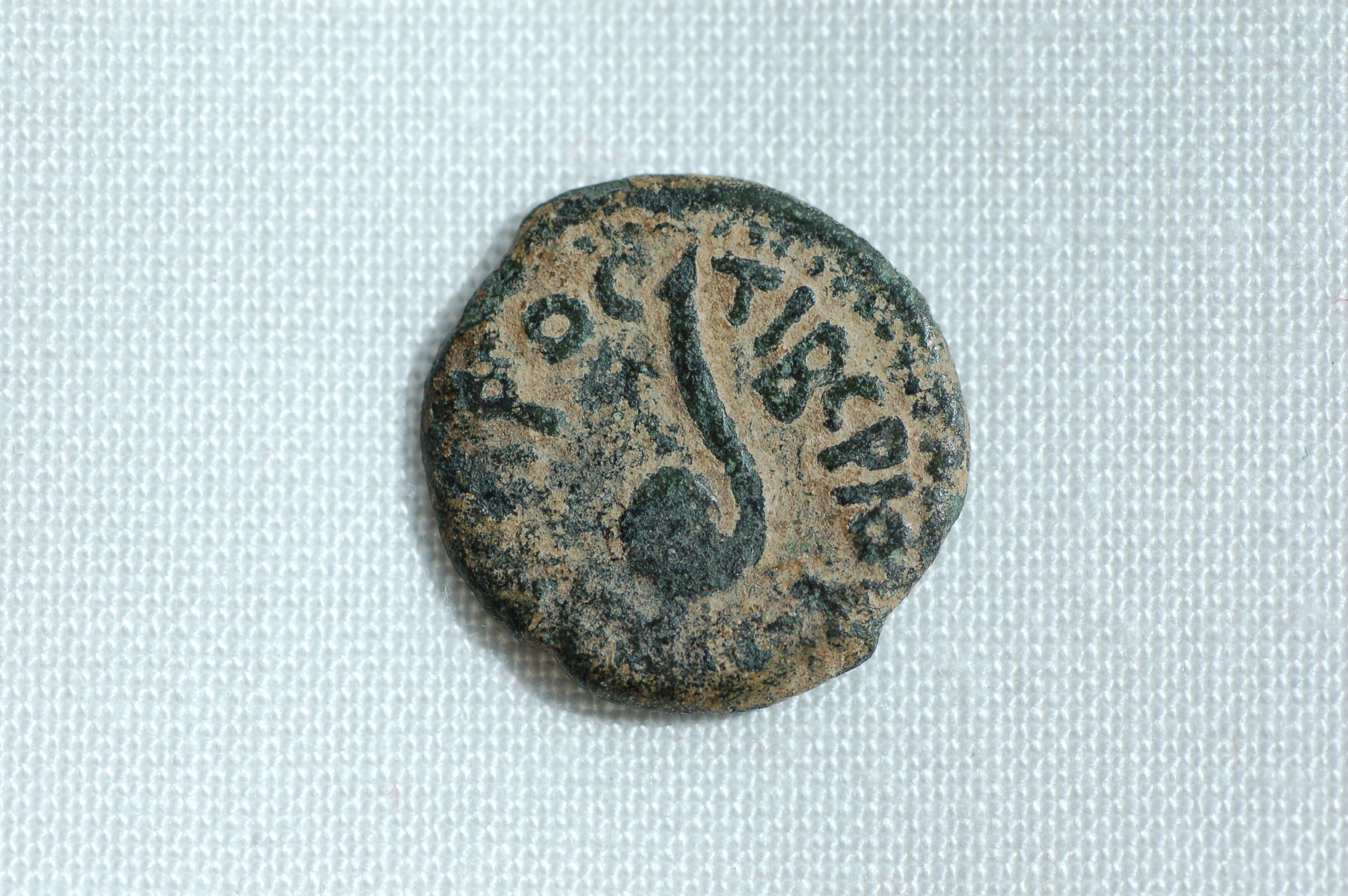
Photo 2. Lepton with Shepherd´s crook
Father Filas did a lot of research on the presence of these coins. He noticed something that he had not seen before, a sort of design directly over the right eye, four curving capital letters, and also something that looked like a shepherd’s crook. He identified the one over the right eye definitely as a lituus of Pontius Pilate and the one over the left eye as a Pontius Pilate lepton known as the JOULIA (Julia) which was struck only during a sixth-month period in A.D. 29 in honor of the mother of Tiberias Caesar.
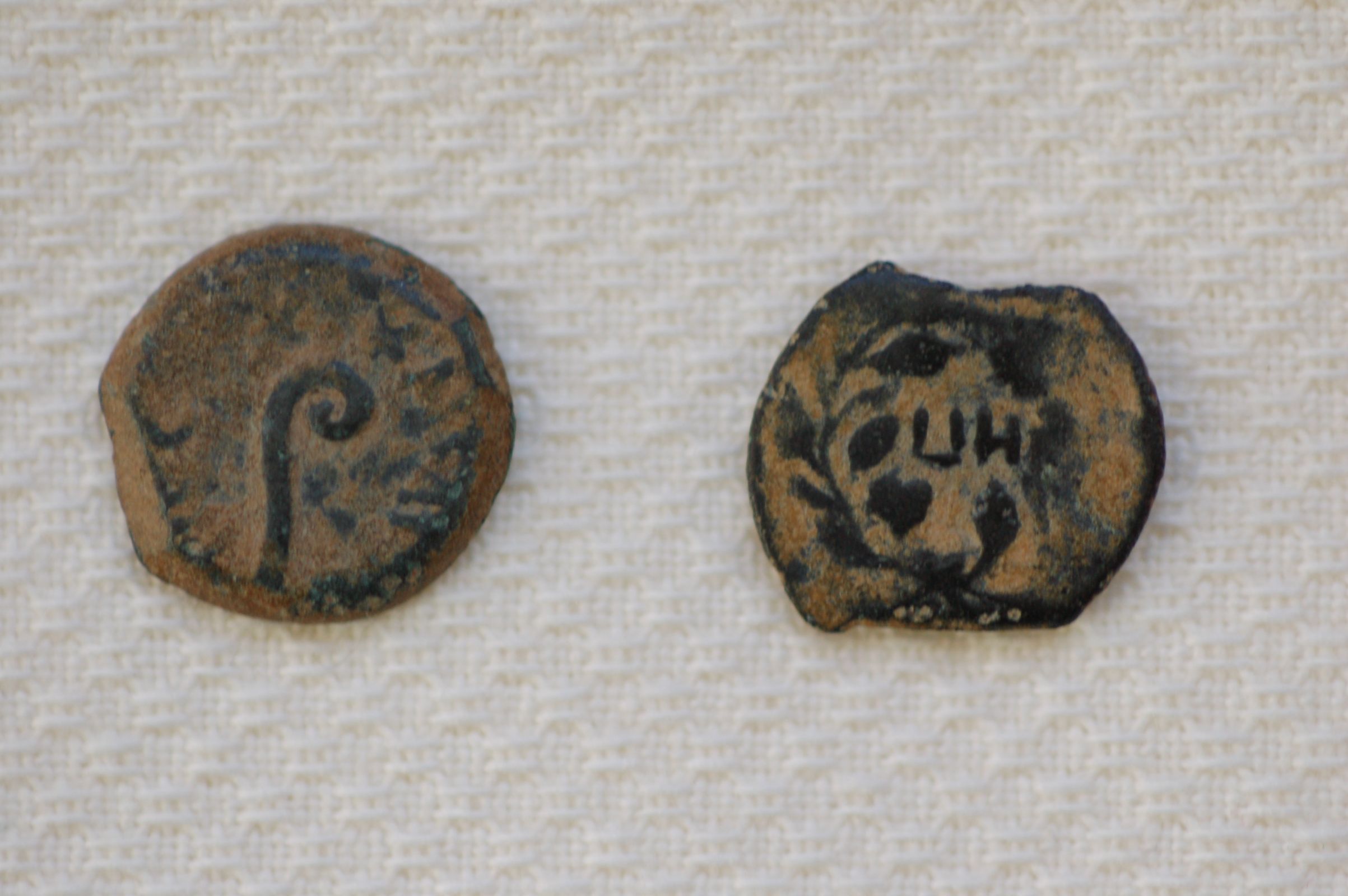
Photo 4. Front and back of lepton with Shepherd´s crook from Soons collection
These findings received a mixed reaction; while some accepted them as at least possible, others met them with derision, also because the letters had a misspelling. Later, Father Filas found in numismatic shops several leptons with the same misspelling.
Alan and Mary Whanger decided to do research on these coins with their Polarized Image Overlay Technique and that revealed seventy-four points of congruence (PC) between the image on the right eye of the Shroud and Filas’s lituus lepton, and seventy-three PC between the left eye image and the Joulia lepton. Remember, in a court of law it takes only fourteen PC to establish the same source of fingerprints. These coins are much smaller than a fingerprint. Some of Fila’s coins, show a clipped edge on one side that matche a clipped edge on the Shroud image.
These coins were crudely designed and crudely struck. They were made from cast bronze bars of coin blanks into which the design was hammered and then the coin was cut from the bar, leaving a flat or clipped edge on one side. The iron dies would last only for perhaps a thousand or two thousand coins and then would deform or break and a new die would have to be made. Hence there are countless variations of the same design, many misspellings, and many variations of position.
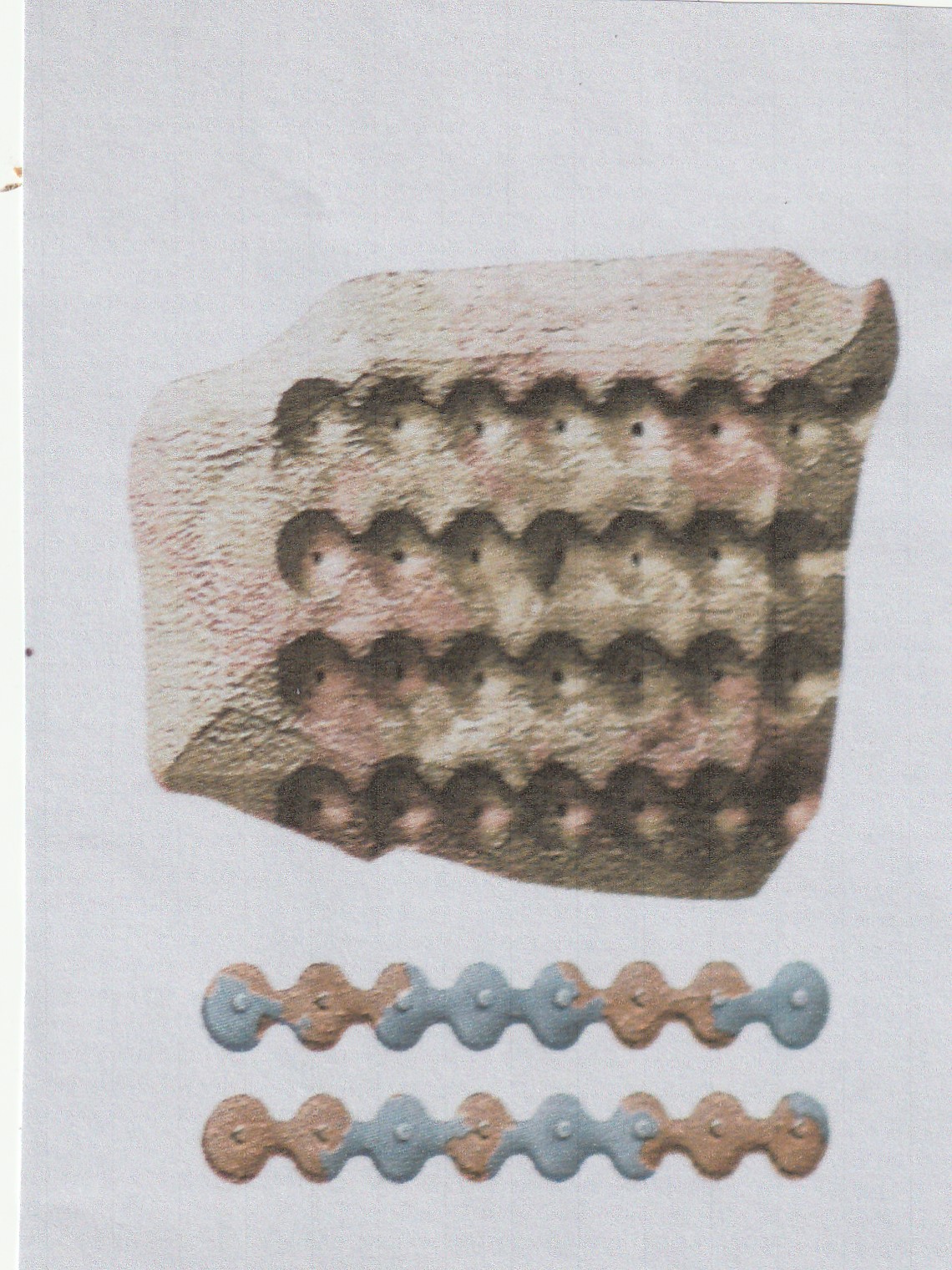
Photo 3. Cast bronze bar for production leptons
The images were probably formed by corona discharge, where ionizing electrical energy first spreads over the surface of any object in the electrical field, whatever it may be-flesh, hair. cloth, leather, metal etc. The sparks or ions then tend to be discharged as streamers which may be two inches or more in length, and they are discharged from irregular or elevated areas rather than from smooth surfaces.
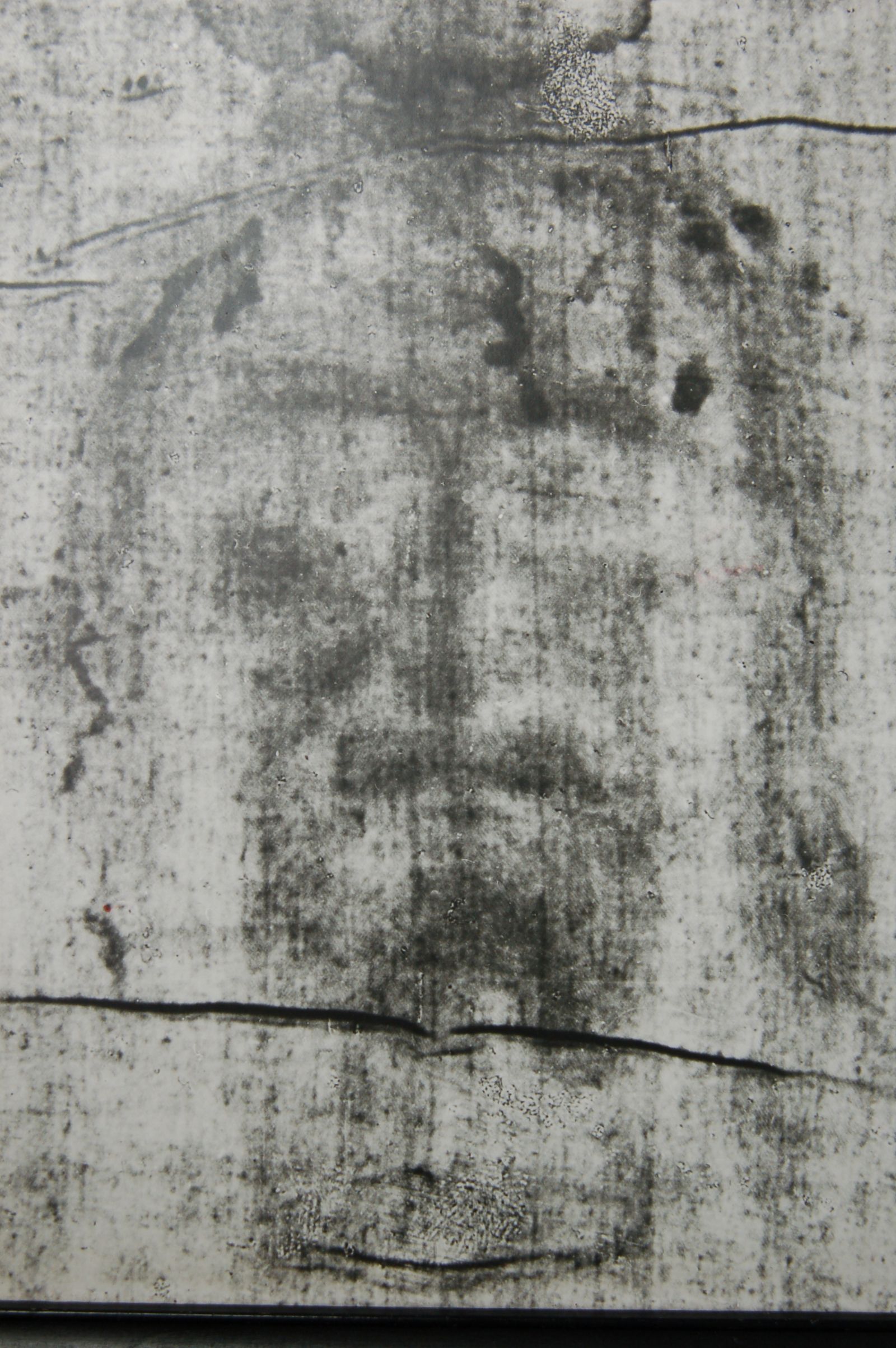
Photo 5. Positive photograph face with outline of two coins |

Photo 6. Anaglyph photograph face with coins. USE 3D GLASSES |
On the photographs you can see the “coins” over the eyes. In the photographs of the VP-8 Image Analyzer they are rather obvious. We were not able to see the details during our investigations, but the VP-8 Image Analyzer shows clearly, 3D, almost round objects on top of the left and right eyelids.
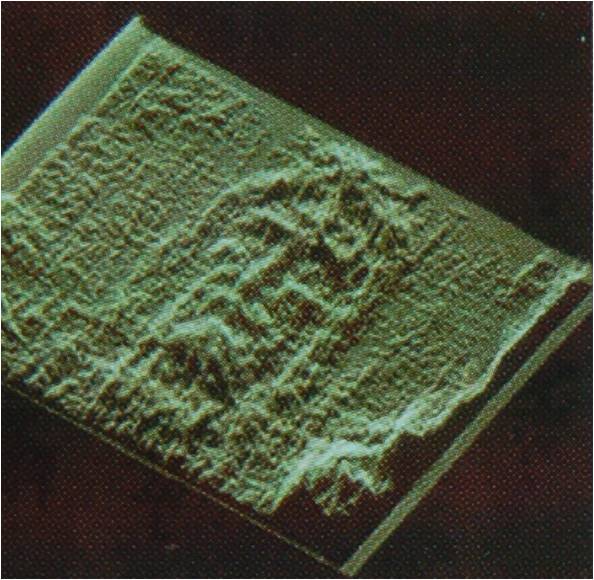
Photo 7. VP-8 Image Analyzer with on eyelids in vertical relief round objects
